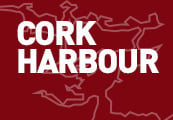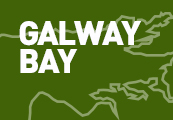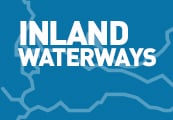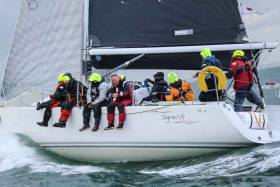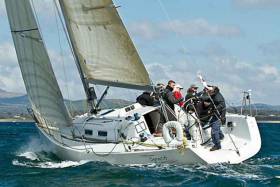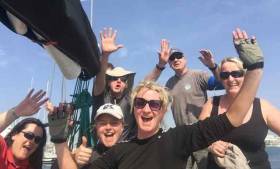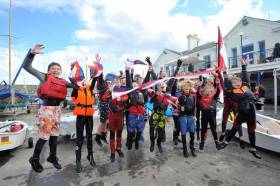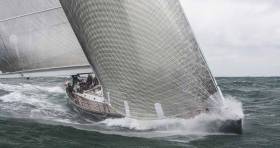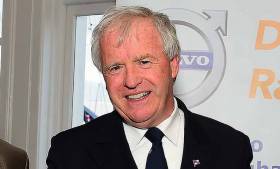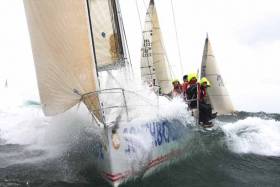Displaying items by tag: National Yacht Club
The interest and resulting entry for the Volvo Dun Laoghaire to Dingle D2D Race has exceeded all our expectations, writes race organiser Adam Winkelmann.
We now have 39 confirmed entries and expect to have close to 45 boats on the start line on Wednesday June 14th. Janet Grosvenor from RORC will be here to observe the start on June 14th and race management procedures with a view to our ambition to be a RORC endorsed race in 2019. I think with these numbers we are on a good path to that. There is no doubt that the resurgence in ISORA has been a significant factor in the growth and composition of the racing class. By adding RORC in the future we can expect other boats to enter to qualify their crew for the Fastnet Race later in the same year.
We have had a very positive reaction from sailors to our revised schedule of a Wednesday evening start and a Prizegiving Party in Benners Hotel in Dingle on Saturday June 17th. We have included a time limit of 18.00hrs on Saturday in the Sailing Instructions to ensure that we can proceed with prizes later that evening. This facilitates the sailors crew planning for a return to Sovereigns Cup or to work on Monday! We will be giving each boat a crate of Crean’s Beer on arrival in Dingle. Many boats have also booked accommodation with our long term partner the Dingle Skelligs Hotel and no doubt much of the post race analysis will take place in the bar there.
We are looking forward greatly to the start from the National Yacht Club in Dun Laoghaire on June 14th at 19.00hrs (starting area in Scotsmans Bay) and encourage as many as want to come out either on the pier or in boats to wave the fleet off on its journey. Yellow Brick tracking of the race will be available so families and supporters can follow the race from start to finish. If the crews bring the trackers to the pub with them as happened last time you will even be able to locate them there!
UPDATE: Comment From Sgrech skipper Stephen Tudor:
Sgrech is committed to the 'D2D' classic offshore race and will be on the starting line on June 14th.
The race provides offshore challenges at 270 miles but also some of the most spectacular scenery from the start in Dublin Bay, southwards down the banks along the east coast of Ireland, Tuskar Rock Light with her South Hen and Chickens. Along the south coast to Fastnet and onwards into the Atlantic.
The next corner the Bull, The Cow and The Calf - spectacular and it does look like a bull.
Next the Great Skellig - truly magnificent but watch out for the Washerwoman Rock - she is vicious!
Then north east to Dingle, the welcome from Fungie the resident dolphin.
Then there is Dingle - a fantastic destination and the high street pubs worth a visit before a party and a gentle cruise home! - Classic join us.
ISORA Chairman Peter Ryan adds: After the Round Ireland Race, it is one of the best offshore races in these waters. After the race, nothing matches the craic in Dingle.
Class divisions breakdown as follows:
11 Cruiser Class
3 Mini 650 Class
5 2 Handed Class
19 Racing Class
39 D2D entries to date are below:
|
ACT Two |
DuFour 425 |
IRL4250 |
Cruiser |
|
AJ Wanderlust |
Jeanneau 45.2 Sun Odyssey |
IOM 8931 R |
2-handed |
|
aquelina |
J-112E |
IRL 1507 |
Racing |
|
Aurelia |
J Boats |
IRL35950 |
Racing |
|
Birmayne |
Bruce Roberts |
IRL 756 |
Cruiser |
|
Cavatina |
Granada 38 |
IRL3861 |
Racing |
|
Elandra |
SIgma 33 |
IRL 4536 |
Racing |
|
EOS |
X 362 SPORT |
IRL 6695 |
Racing |
|
Fulmar Fever |
Westerly Fulmar |
FR 14 |
Cruiser |
|
Gemo |
Mini 650 Dingo 1 |
FR 699 |
2-handed |
|
Golden Fleece |
Sigma 41 |
IRL51215 |
Cruiser |
|
Harriet Marwood |
Farrow & Chambers, Collins 40 Tandem Keel |
GBR3556L |
Cruiser |
|
Indian |
J109 |
1543 |
2-handed |
|
IOS Desert Star |
Jeanneau |
irl 1397 |
Racing |
|
Jedi |
J109 |
IRL 8088 |
Racing |
|
Juggerknot |
J/109 |
IRL 3660 |
Racing |
|
Lady Rowena |
Sadler |
IRL34218 |
Cruiser |
|
Lively Lady |
Beneteau First 44.7 |
IRL1644 |
Racing |
|
LOBSTER |
Two Ton Dubois |
IRL 7077 |
2-handed |
|
Maybird |
Shepherd design built by Jack Terrell in 1937 |
GBR 644R |
Cruiser |
|
Mojito |
J/109 |
GBR0947R |
Racing |
|
Oystercatcher |
Dufour |
IRL 1177 |
Cruiser |
|
Pamela |
Discovery 55 |
IRL5503 |
Cruiser |
|
Pipedreamer VI |
Dufour 40 |
GBR 2271L |
Cruiser |
|
Platinum Blonde |
Beneteau 35 First |
IRL 3516 |
Racing |
|
Port of Galway Black |
Mini 6.50/ Proto |
303 |
2-handed |
|
Port of Galway Green |
Mini Transat 6.5 Proto |
IRL78 |
2-handed |
|
Prima Luce |
Beneteau First 35 |
IRL 3504 |
2-handed |
|
Rockabill VI |
JPK 10.80IRL |
IRL 10800 |
Racing |
|
Ruth |
J/109 |
IRL 1383 |
Racing |
|
Soufriere |
Spirit 54 |
IRL 1974 |
2-handed |
|
Spirit of Jacana |
J133 |
IRL1335 |
Racing |
|
Thalia |
Sigma 400 |
IRL733 |
Racing |
|
Thisbe |
Nicholson 32 |
IRL 1530 |
Cruiser |
|
Wakey Wakey |
J109 |
GBR5909R |
Racing |
|
White Tiger |
Beneteau First 44.7 |
IRL4470 |
Racing |
|
Windshift |
Sunfast 37 |
37737 |
Racing |
|
WOW |
Austral Yachts |
IRL4208 |
Racing |
Annalise Murphy Fitness: A Typical Day Video
As Annalise Murphy prepares her campaign for Gold at Tokyo 2020, the National Yacht Club Olympic Silver Medalist has shared a 'day in her life video' training around Dublin Bay.
Three hours on the water with boat handling, speed testing and race practice and video analysis, she follows it with a 63–km endurance bike ride in the afternoon. See video below.
An Alternative Pace For Irish Sailing In 2017?
After the accelerating build-up to Olympic Medal success throughout the summer of 2016, there was hope in some sections of the Irish sailing community that the mood of 2017 might be different in pace. Tokyo 2020 still seemed very far away to everyone except the most dedicated Olympians. There appeared to be a feeling that 2017 should be the year for everyone else, and particularly for those who yearned for a less competitive enjoyment of boats and sailing. W M Nixon takes stock.
Once upon a time, we had seasons. Sailing wasn’t 12 months of the year, let alone 24/7. On the contrary, there were the rare old times of Opening Days and Closing Days (we’re talking annual sailing programmes here, not pubs), and Launching Suppers and Hauling Up Suppers and whatever, and not a sail to be seen at Christmas except for the rare oddball whose very rarity underlined the unusual nature of such a sight in the dead of winter.
But now we have wetsuits, and the effectively year-round programme at many sailing centres – in my own club at Howth, for instance, it has been continuous since April 1974 thanks to that Autumn’s introduction of the Frostbite series for the then new-fangled Lasers. And if you’re not actually out sailing yourself, there’s the means of keeping up with those who are, a classic case being the following of the tracker for this past week’s 500-mile Mini-en-Mai race by Tom Dolan, which had certain goggle-eyed adherents clicking-in at ungodly hours of the night to see how our man was doing.
It was a race being sailed at a flat-out pace and a level of concentration - despite a sleep-deprived physical and mental state – beyond the comprehension of most of the rest of us. Good luck to those who feel drawn to it personally, and can do it. But today, there’s an ISORA race from Holyhead to Dun Laoghaire under way that is catering for all levels of involvement and commitment, and it has attracted a worthwhile starting line-up of 31 boats, encouraged by the welcoming efforts of ISORA Commodore Peter Ryan and his team.
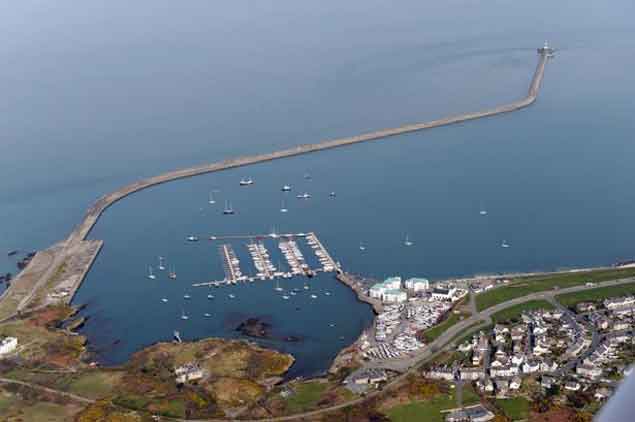 Holyhead Harbour as sailing people know it – not as a utilitarian ferry port, but as a pleasant corner called Porth-y-Fellyn where there’s a sailing club, marina and boatyard
Holyhead Harbour as sailing people know it – not as a utilitarian ferry port, but as a pleasant corner called Porth-y-Fellyn where there’s a sailing club, marina and boatyard
The word on the waterfront is that hyper-racers – people who expect three or four windward/leeward races per day at an intensely-run regatta – tend to dismiss this growing contemporary trend back towards classic Irish Sea Offshore Racing Association courses as sailing for people who can’t hack it in the frequent cut-and-thrust of artificial courses. But that’s to take a “one size fits all” attitude to sailing. If there’s one indisputable feature about our sometimes very odd sport, it’s the variety of the people involved in it – and that’s before you even consider the different type of boats.
On top of that, not only are there people who can get all their sailing enjoyment without needing to race at all, but there are grades of dedication in competition in sailing. This was particularly apparent a couple of years ago down at Dromineer on Lough Derg, when classes of Dragons, Flying Fifteens and Squibs descended on the place for the annual end-of-season Freshwater Challenge in October.
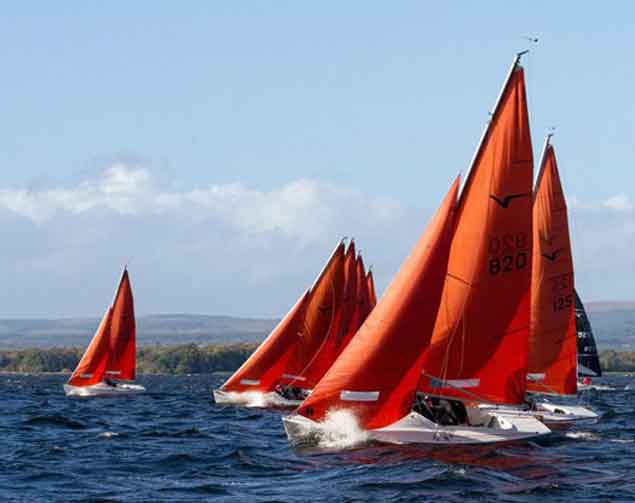
Top Squibs from all over Ireland gearing themselves up for two days of intensive racing at Dromineer. But it emerged that for many of the local fleet, they weren’t into this sort of thing at all. Photo: Gareth Craig
There was an impressive fleet of top Squibs from all over Ireland out racing like fury on the lake. But there was also a substantial number of local Squibs that stayed in their berths. And it emerged that they hadn’t even entered the event in the first place. It seems that the Dromineer Squibs had been bought by people who saw them as handy and surprisingly comfortable little boats in which you could take the children, or more likely the grandchildren, out for a fun sail. And maybe you and a friend could do the occasional gentle summer’s evening club race for a bit of sociability. But the idea of committing to a frantic weekend of top competition was anathema.
Now while we’re not suggesting that the 31 boats which will be starting this morning in the ISORA Holyhead to Howth Race include a significant sector which are anti-competition, nevertheless there’s a distinctly relaxed atmosphere in some of the fleet in the knowledge that their abilities will be recognized by the use of Progressive ECHO handicap in tandem with the ruthless calculations of IRC.
The Number-Cruncher-in-Chief, Denis Kiely of the Irish Cruiser Racing Association, set to during the winter in his lair in Kinsale and ran the figures from all last year’s ISORA racing through his mincer to come up with an ECHO handicap (which is performance based) for boats of all kinds, and these figures were available to get things going this year.
 The Irish National Sailing School’s keelboat fleet includes (left to right) the Reflex 38 Lynx, the Elan Beaufort, and the J/109 Jedi which is doing today’s cross-channel race.
The Irish National Sailing School’s keelboat fleet includes (left to right) the Reflex 38 Lynx, the Elan Beaufort, and the J/109 Jedi which is doing today’s cross-channel race.
Thus we find that a boat like the Kenneth Rumball-skippered J/109 Jedi from the Irish National Sailing School in Dun Laoghaire is racing today on an IRC of 1.010 while her ECHO is 1.075, but against that the majestic Nicholson 58 Rebellion (John Hughes) has an IRC of 1.056, but her ECHO is only 0.999.
With Progressive ECHO, it’s a flexible figure which encourages regular participation, for if you’ve had a bad day at the races, next time out you’ll find your Progressive ECHO has progressed even further southwards.
It all seems too gentle to be worth even thinking about by those whose every thought is competitive. But for those who enjoy settling down for a long haul at sea, with the opportunity to test boat and crew in the gentlest possible manner against other craft, it all has a certain appeal.
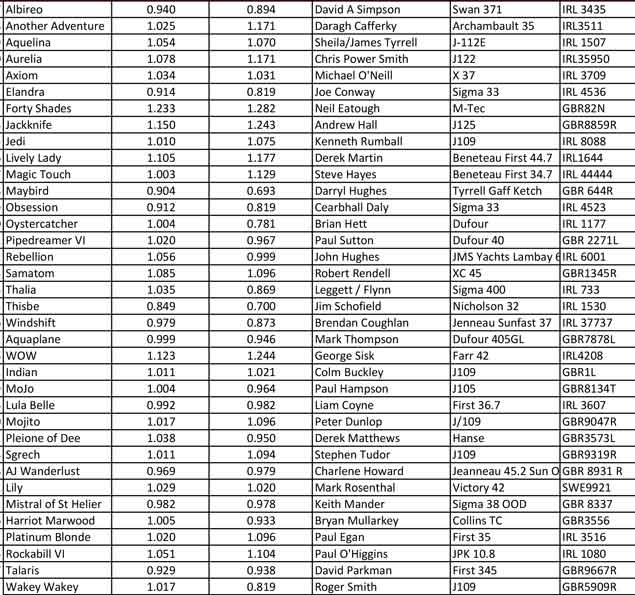 The fleet in today’s race shows interesting comparisons between IRC and Progressive ECHO handicaps. Some have not made the line, including the veteran ketch Maybird, but a late addition not listed is the Sunfast 3600 Bam (Conor Fogerty)
The fleet in today’s race shows interesting comparisons between IRC and Progressive ECHO handicaps. Some have not made the line, including the veteran ketch Maybird, but a late addition not listed is the Sunfast 3600 Bam (Conor Fogerty)
And it will be interesting on several levels, for not only have we boats of a definite cruiser-orientation whose crews are going along because ISORA has gone out of its way to offer the alternative of a developing handicap system which might reward their efforts, but up at the sharp end of the fleet there’ll be some very interesting performance comparisons to be made between hot boats as they race in what looks likely to be quite brisk conditions.
 Given a chance, she’ll fly – Neal Eatough’s Forty Shades is an M-Tec Open 40.
Given a chance, she’ll fly – Neal Eatough’s Forty Shades is an M-Tec Open 40.
The expectation is of a fresh to strong sou’westerly which mercifully will back during the day to free the fleet up to lay the course to Dublin Bay, in fact it might free them so much that one of the more interesting newcomers, Neal Eatough’s Open 40 M-Tec Forty Shades, could be across in half a day.
Another boat which will revel in a freeing breeze is Conor Fogerty’s Sunfast 3600 Bam – the Howth skipper is doing it two-handed with clubmate Robert Slator, and he sees the forecast weather pattern as providing them with a real chance.
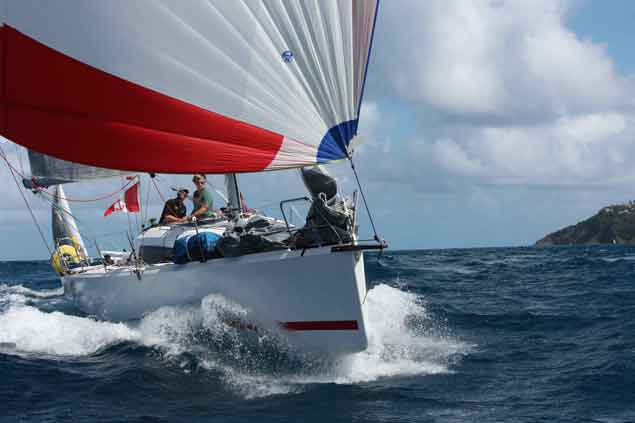 Conor Fogerty’s successful Sunfast 3600 Bam! – a class winner in the RORC Caribbean 600 2016 – is a late entry, and he’ll be doing the race two-handed with Robert Slator
Conor Fogerty’s successful Sunfast 3600 Bam! – a class winner in the RORC Caribbean 600 2016 – is a late entry, and he’ll be doing the race two-handed with Robert Slator
Inevitably the smart money will be on Paul O’Higgins’ JPK 10.80 Rockabill VI, but with no less than six J/109s in the mix, there’ll always be at least one potent representative of this hot class ready to pounce if there’s the slightest let-up in the pace on the JPK 10.80.
One of these J/109s is of course Stephen Tudor’s defending ISORA Overall Champion Sgrech from Pwllheli, a boat which is the very personification of ISORA’s cross-channel community, as her regular crew includes ISORA Commodore Peter Ryan, who is also a former Commodore of the National YC.
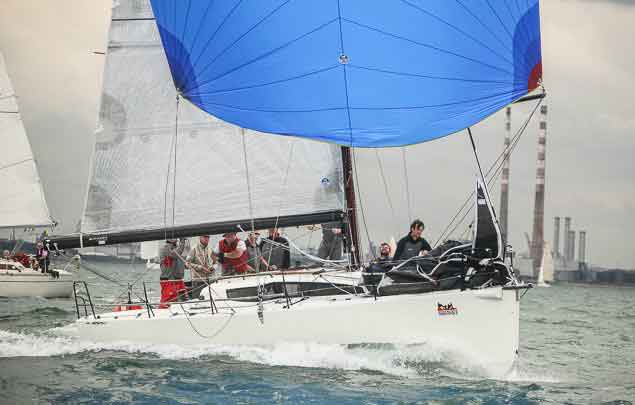 Paul O'Higgins JPK 10.80 Rockabill VI is one of the favourites for IRC success. Photo Afloat.ie
Paul O'Higgins JPK 10.80 Rockabill VI is one of the favourites for IRC success. Photo Afloat.ie
As anyone who has ever sailed on one of the Pwllheli boats will know, there’s always a smattering of Welsh spoken among the crew. Aboard Sgrech, says Peter, they speak little else except when they want to curse and swear, when they’ll tell you – with solemn faces – that there are no swear words in Welsh.
“Somehow we understand each other,” says Peter, “but Welsh is so different – not just from English, but from Irish too – that you could sail regularly with them for 45 years and still know very little of this strange tongue that they talk away in all the time”.
Perhaps it’s the underlying camaraderie of the sea which enables the communicational oddity which is Sgrech to be so effective, but then too, the shared enthusiasm of Stephen Tudor and Peter Ryan is infectious, and sometimes it spreads to the entire fleet.
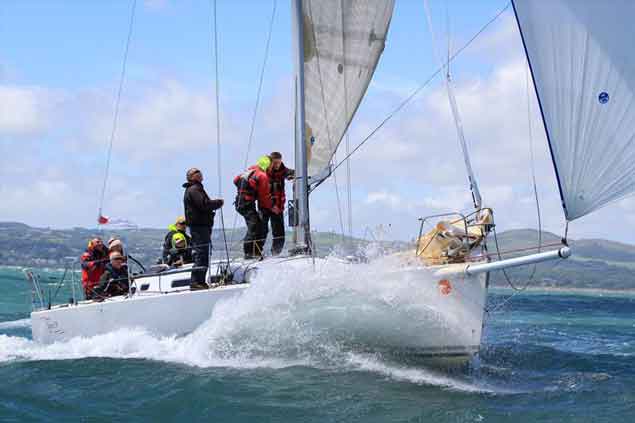 Sgrech at full chat. When you’re sailing like this and something goes wrong, then you really do know if there are no swear words in Welsh....
Sgrech at full chat. When you’re sailing like this and something goes wrong, then you really do know if there are no swear words in Welsh....
Thus the Commodore of ISORA expected a bit of a party in Holyhead Sailing Club last night notwithstanding the prospect of a windward slug first thing this morning (start was at 0800hrs today, there’s a tracker) and equally, with everyone energised by the day’s freeing wind (DV), he confidently anticipates an even more boisterous gathering in the National tonight.
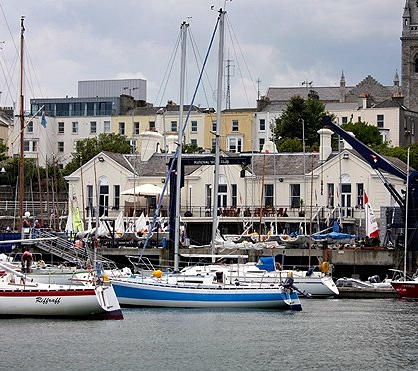 Welcome home. The National Yacht Club will be the venue for tonight’s post-race party.
Welcome home. The National Yacht Club will be the venue for tonight’s post-race party.
The ghost of the great John Illingworth, who did so much for the development of offshore racing in the 1940s, ’50s ’60s and ’70s, would approve, as he thought an offshore race without a good party beforehand and an even better one afterwards was not really a proper offshore race at all. That said, Illingworth’s most famous boat, Myth of Malham, was notorious for her paucity of cleats. When a newcomer to the crew demanded to know where he should cleat the headsails, an old hand told him they didn’t cleat the headsail sheets in the masthead cutter rig, as they trimmed the sails all the time....
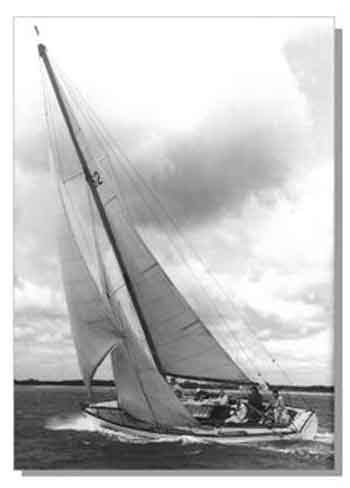 Myth of Malham. John Illingworth’s double Fastnet Race overall winner was renowned for her shortage of cleats.
Myth of Malham. John Illingworth’s double Fastnet Race overall winner was renowned for her shortage of cleats.
In today’s cross-channel dash, I’ve no doubt there’ll be many boats where sheets are cleated while crews settle down to enjoy the satisfaction of the boat trimmed reasonably well and making progress without the prospect of having to make a lot of irritating tacks before the finish. It’s different strokes for different folks.
Earlier this week I found myself studying a boat which is about as different from what your average ISORA racer expects in a boat as is humanly possible. This is Ian Lipinski’s 8.65 metres Griffon which took overall line honours in the 500-mile Mini-en-Mai at La Trinite at 0508hrs Irish time yesterday morning.
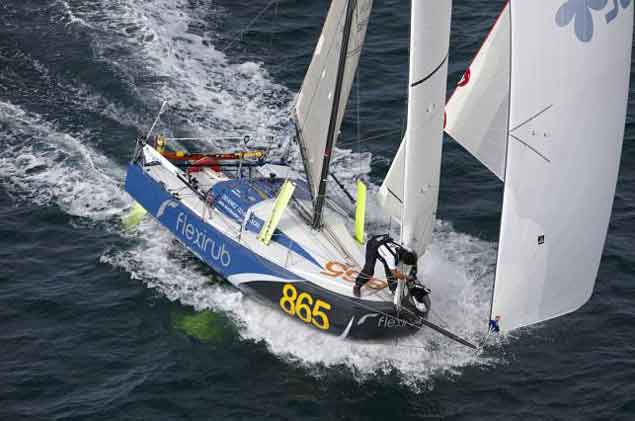 It would be a day’s work for a crew of five to race her- yet Ian Lipinski sails his odd-looking and demanding Proto, the 8.65 metres Griffon, single-handed and he wins too.
It would be a day’s work for a crew of five to race her- yet Ian Lipinski sails his odd-looking and demanding Proto, the 8.65 metres Griffon, single-handed and he wins too.
Griffon is the current pace-setter in the Proto section (prototypes in other words), and she’s a veritable floating laboratory for every development imaginable, including being at the forefront in the testing of foils. Obviously she’s also showing an aversion to that traditional notion of sweetly hollow waterlines forward, as exemplified by the schooner America. And if you dismiss her forward hull shape as being like a Dutch barge, next time you’re near an International Dragon, take a look at her forward waterlines – you might be surprised.
But the thing that really strikes me about Griffon is the number of tasks that the lone skipper has to perform all on his own to keep this machine at optimum performance. The sailplan alone is a 24/7 challenge, and rig optimization is part of it. Add in two daggerboards whose deployment offers multiple choices. Then you must never forget the ideal positioning of the canting keel in ever-changing circumstances. All that done, you still have to sail and navigate the boat. And if on top of all that you can find time to fire off visual and verbal communications with shore and sponsors, joy is unconfined....
Contrast that with the mood that might prevail aboard one of the heftier and more luxurious contenders in today’s Holyhead-Dun Laoghaire. The boat is nicely in trim, and it’s up to the helmsman to keep her there, and if it’s the autohelm as is now permitted, so be it. Alert as ever, the crew noticed a useful backing of the wind a while back, and sheets were adjusted accordingly and then cleated home. My word, but we’re racing keenly. And can that clock really be right? If so, it’s time for Nooners...
Irish Youth Sailing's Selection Process is a Serious Business
Its full title is the Irish Sailing Association Youth Pathway Nationals and Optimist Trials. It is a designation with a great air of seriousness about it, contrasting markedly with current public debate about providing more fun sailing, while making regattas as much about sport and enjoyment afloat and ashore as they are about winning.
Yet from time to time, sailing does have to be serious – deadly serious – if we’re going to have any more significant international medals such as those won at the Olympics by Annalise Murphy, at the Laser Radials Worlds by Ewan McMahon,, and at the ISAF Youth Worlds by Doug Elmes and Colin O’Sullivan. The way those great achievements - hard won through a very serious training and participation programme - were able to immediately lift the public mood with their clearcut international success deserves full recognition. W M Nixon tries to put it into perspective for those whose own sailing does not aspire to the giddy international heights.
When you look at that title of “Youth Pathway Nationals and Optimist Trials”, you wonder that as many as 190 boats in six different classes have turned up at Ballyholme for the four days of racing. For there’d been a certain collective madness beforehand, with some folk talking of beyond 200 or even up to 250 boats. But that could be put down to an excess of exuberance following the impressive turnout of 125 Lasers for the Munster at Baltimore.
 On a tight spinnaker reach in Ballyholme Bay, McDowell and Gallagher narrowly lead the 420s from Heather Spain and iseult Kneafsey of the National, with Lucy Kane and Grace Jennings (East Antrim) next in line. Photo: Mark Mackey
On a tight spinnaker reach in Ballyholme Bay, McDowell and Gallagher narrowly lead the 420s from Heather Spain and iseult Kneafsey of the National, with Lucy Kane and Grace Jennings (East Antrim) next in line. Photo: Mark Mackey
For that was - for many - a fun event in a fun place, with a fun fleet except for maybe the top ten - and even they were frequently seen to laugh. And for sure, there are kids who are having a ball at Ballyholme right now. But for just this one long weekend of the year, there are serious moves being made which will decide the development of junior sailing at the top level in the year ahead, and in many of the years beyond that. We should be worried if it weren’t so brutally focused, rather than being unduly concerned about junior sailing becoming too serious.
That said, the seriousness produces its lighter moments, though you could sympathise with the Topper person who noted that there are five Topper places up for grabs for admission to the Topper Pathway Scheme, yet there are 32 Toppers (39 including the 4.2s) racing their little hearts out at Ballyholme. “What are we going to say?” asked this conscience of the Topper class, “What are we going to say to the young skippers who come 6th, 7th and 8th.....?”
Then there was the Optimist dad who arrived into the Race Office letting the world know that his family’s budget for the event was already shot to ribbons. Heaven only knows what the accommodation pressure would have been like if the more optimistically anticipated fleet of 250 boats with all classes had all turned up. For as it is, accommodation pressures have resulted in people being forced to rent houses for the week – for there’s no way you can get a rental starting on a Wednesday night – and deciding that the sensible thing is to come for a week’s holiday for the whole family. Inevitably, it means lots of money running out the door before the one or two family members who are actually racing start their proper sailing.
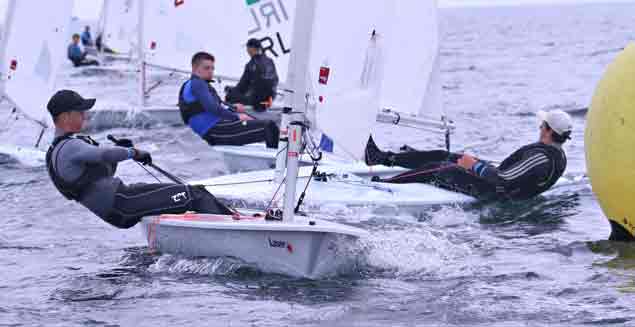 After two days Ewan MacMahon of Howth has the overall lead in the Laser Radials. Photo Mark Mackey
After two days Ewan MacMahon of Howth has the overall lead in the Laser Radials. Photo Mark Mackey
So anyway this Opty dad is telling anyone who is listening that the budget is already shot with the family spending a whole week in a house in a village he’d never heard of before. But now, worse still, somebody has just told him that his daughter is seen as one of the rising stars of the class, and they wouldn’t be surprised, once this weekend’s racing is finished, to see her name down as a potential member for the Irish squad at the Optimist Worlds 2017 at the Royal Varuna Yacht Club in Thailand in July.
“And do you know what that means?” he demands. “It means that if we accept that offer of a place at the Worlds, within a week we have to divvy up €2,000 for the International Optimist Dinghy Association of Ireland. I can tell you something” he continues, now in full flight, “if she’s anywhere within range of a place with only one or two races still to go, we’ll be seriously thinking of feeding her a dodgy chicken sandwich.....”
Such are the joys of being an Opty dad. And it was something to contemplate along with the fondest recollections at an event on Thursday night in my own home club of Howth, when friends from times past – some of them friends from very long times past – joined with the great and the good including ISA President Jack Roy and his wife Rosemary, and HYC Commodore Joe McPeake – together with a whole raft of former HYC Commodores – to celebrate the award by World Sailing (formerly ISAF) of a Gold Medal to Howth’s own Helen-Mary Wilkes for her decades of service to the International Optimist Dinghy Association worldwide.
 At the conferring of Honorary Membership of Howth Yacht Club on Helen-Mary Wilkes in celebration of her Gold Medal from World Sailing are (left to right) Jack Roy (President, Irish Sailing Association), Joe McPeake (Commodore Howth YC, who is holding a copy of Robert Wilkes’ History of the International Optimist Class,) Helen-Mary Wilkes, and Robert Wilkes. Photo: John Deane
At the conferring of Honorary Membership of Howth Yacht Club on Helen-Mary Wilkes in celebration of her Gold Medal from World Sailing are (left to right) Jack Roy (President, Irish Sailing Association), Joe McPeake (Commodore Howth YC, who is holding a copy of Robert Wilkes’ History of the International Optimist Class,) Helen-Mary Wilkes, and Robert Wilkes. Photo: John Deane
Her international career started when it was noted that she was the key player as Secretary of the Organising Committee when Howth ran the Optimist Worlds in 1981. After that, Helen-Mary’s international service was of such quality and duration that her most recent years with the IODA have been as President of Honour. For, in the many years she was actually running it all on a day-to-day basis with the backroom support of her husband Robert, they saw an increase of 78% in international membership of the world association to bring the total to 87 countries, and 57 of those countries regularly took part in international championships, while boat numbers increased stratospherically.
It was by no means an easy ride, for with main builders in several countries and different continents, the Optimists were by no means totally One-Design. But fortunately Helen-Mary Wilkes had the very man in Ireland with the skill, patience and diplomacy to sort this out - David Harte of Schull, at that time a Howth resident. As an Optimist builder himself, “Harty” knew everything about these very important little boats, and between 1995 and 1997 he was on an almost continuous worldwide mission to persuade the eight main builders to standardise the class to the highest One-Design requirements, an objective in which he succeeded.
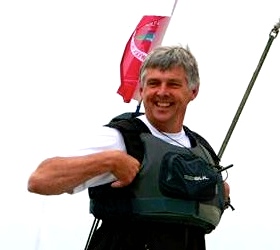 David Harte of Schull, who in 1995 -1997 was instrumental in ensuring that the eight production builders worldwide of the International Optimist Dinghy were producing a truly One-Design boat.
David Harte of Schull, who in 1995 -1997 was instrumental in ensuring that the eight production builders worldwide of the International Optimist Dinghy were producing a truly One-Design boat.
David Harte being one of these people who seems ageless, it takes a bit of an effort to realize that he was doing this all of twenty years ago. But the result has been a much more total global acceptance of the Optimist. And in speaking to Thursday night’s gathering, Helen-Mary and Robert Wilkes addressed people’s concerns that the current event in Ballyholme, and other major Optimist championships in Ireland, are becoming too serious for the good of the young sailors.
“We’re every bit as interested in the kids who are into Optimists just for club racing and local sailing as we are for the high flyers. Over Easter, there are five major Optimist regattas under way at different venues in Europe. In all, more then 4,500 Optimists are sailing at every possible level of competition in these events. Yet at none of those regattas is selection for special strands of training under way. Ultimately, it is all about sailing for sailing’s sake. It only happens to be the case that it’s in Ireland the Easter Regatta is also being used for the trials. Inevitably, there’s criticism that the kids are being put under too much pressure here. But as a matter of policy, the International Optimist Dinghy Association is as interested in friendly local racing as it is in international competition”.
 “Get ’em up and move ’em out....” Optimists and Lasers swing into the launch sequence at Ballyholme. Photo: Pierce Purcell Jnr
“Get ’em up and move ’em out....” Optimists and Lasers swing into the launch sequence at Ballyholme. Photo: Pierce Purcell Jnr
Meanwhile last night up at Ballyholme they were able to post two days of good racing results in westerly winds for the Laser Radials, 420s and Optimists, and one day of racing for the Toppers, Laser 4.7s and Topper 4.2s.
LASER RADIALS
After a 7th, 4th and 6th on Thursday, when Aaron Rogers of Rush SC was the overnight leader, Ewan MacMahon of Howth came back like a rocket yesterday and posted 1,1, and 2nd to leave him leadng on 14pts to the 20 of Henry Higgins of the Royal St George in second (4,(26) 2,4,2,8), with Johnny Durcan of Royal Cork finishing strongly with a bullet in yesterday’s concluding race for a scoreline of 2,8,10, (42 BFD) 3, 1 and a points total of 24. Rush SC pair of Conor Quinn and Aaron Rogers are next on 27 and 28 in a fleet of 43.
420
Geoff Power and James McCann of Dunmore East have recovered from an OCS yesterday to take over the lead in a healthy fleet of 16, they have totalled 6 points with a used scoreline of 2,1,1,1,1, with Gemma McDowell and Emma Gallagher of Malahide taking one of the two spare wins after the Power display of, well, power, the Malahide crew now lie second on 12 points, just one point ahead of the other race winners, Kate Lyttle and Niamh Henry of Royal St George.
OPTIMISTS
Justin Lucas (13) of Tralee and Royal Cork had been hotly tipped as the favourite for the Optimists, and he has certainly lived up to the billing with a scoreline of 1,1,(12),11,4,5,1 after two days of racing in a 62-strong fleet. There has been some post-racing re-arrangement of results with protest outcomes, but Lucas is well clear of Royal Cork’s Michael Carroll with 23 points to the 37 of Carroll in second, while James Dwyer Matthews (Cork & Kinsale) is tied on 40 with the leading junior Luke Turvey (Howth and National,) who goes to fourth on the higher discard. Leah Ricard of the National is top girl at 9th overall.
LASER 4.7
The National YC’s Clare Gorman leads after the first day of racing for the 4.7s, with a scoreline of 4,2, and 1 to give 7 pts against the 9 of Royal St George’s Jack Fahey in second, third slot being held by David Carroll of Kinsale & Crosshaven while Tom Higgins of RStGYC and Eva MacMahon of Howth tie on 16, but Higgins takes 4th on the discard in a fleet of 33.
TOPPER
Rob Keal of Royal Cork had a good first day of it yesterday to lodge two firsts and a fourth, giving him 6pts against the 11 of second placed Kate Fahy (RStGYC & Lough Derg) while East Down’s Sarah Jennings’ 13pts keeps her in third ahead of Royal Cork’s Conor Horgan on fourth in a fleet of 32.
TOPPER 4.2
Lewis Thompson of Ballyholme and Donaghadee has had three straight firsts to the three seconds of Ballyholme’s Hannah Dadley-Young, third overall is Donaghadee/Ballyholme’s Joshua McGregor with two hirds and a fourth while Adam Irvin of the Irish National Sailing School is fourth on 4,5,4.
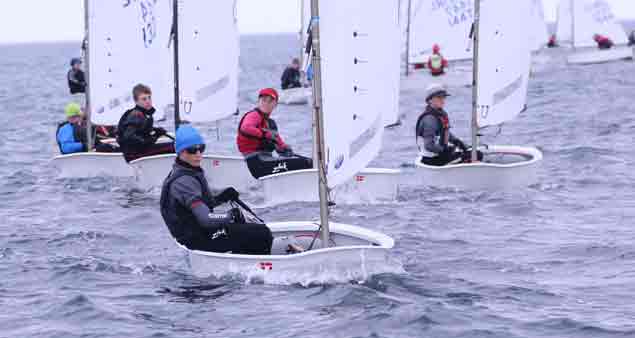 Justin Lucas of Tralee Bay is leading the 62-strong Optimist fleet. Photo: Mark Mackey
Justin Lucas of Tralee Bay is leading the 62-strong Optimist fleet. Photo: Mark Mackey
It is interesting to contemplate all this highly-regulated contemporary modern sailing on Belfast Lough, for it was far from Lasers and 420s and four days of intensive racing from committee boat starts that we were reared when we spent our first years afloat in and around Ballyholme Bay.
In those days, proper junior training and a structured junior racing programme weren’t so much in their infancy as barely a gleam in anyone’s eye. At a certain age – before any of us was even into our teens – we were given a new 14ft clinker sailing dinghy of the Ballyholme Insect Class, and told to get on with it on the assumption that, having sailed with adults in keelboats, we’d know how it was done.
 Steep learning curve. We weren’t even into our teens when we were presented with a 14ft Ballyholme Insect Class, and told to get on with it. Photo: W M Nixon
Steep learning curve. We weren’t even into our teens when we were presented with a 14ft Ballyholme Insect Class, and told to get on with it. Photo: W M Nixon
With a massive lack of imagination, we called her Grasshopper. In truth, Rockhopper would have been more on target. The distinctly exposed Ballyholme Bay is sheltered to the northeast, ’tis said, by Ailsa Craig, which is 40 miles away. Admittedly the bay has a decidedly featureless shoreline at low water, which limits sailing options even if you aren’t hampered by strong onshore winds. But when the tide is well in, all sorts of little islands and channels are created, and we learnt our sailing threading our way through this miniature maze of skerries.
 Ballyholme Bay at Low Water has a rather featureless shoreline....
Ballyholme Bay at Low Water has a rather featureless shoreline....
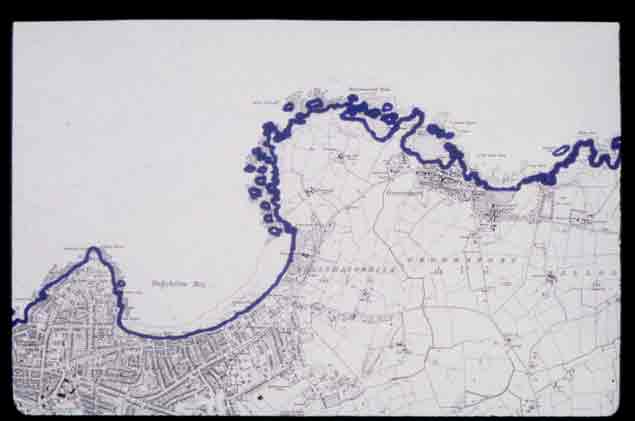 ....but at High Water it becomes a much more interesting place, with all sorts of islands and channels.........
....but at High Water it becomes a much more interesting place, with all sorts of islands and channels.........
 ......through which a sailing dinghy with centreplate half-raised can thread her way. Photo: W M Nixon
......through which a sailing dinghy with centreplate half-raised can thread her way. Photo: W M Nixon
There was of course no such thing as an accompanying rescue boat, but from time to time we sailed in consort with a friend whose boat was a smaller sister, a 12ft–clinker dinghy, but made more exotic with a little bowsprit.
Safety rules were few. We were expected to wear kapok lifejackets when actually sailing, but not otherwise, and they’d immediately be used as fenders if we came alongside rocks or small jetties. As for sailing limits, we were supposed to stay in Ballyholme Bay south of a line from Luke’s Point on the west side over to a rock called Jenny’s Isle off Ballymacormick Point to the northeast. However, at high water you could sail with the centreplate half up inside Jenny’s Isle and the tidal islets beyond it, so you could keep going east, while staying within that outer limit line, until you’d gone clean round the world.
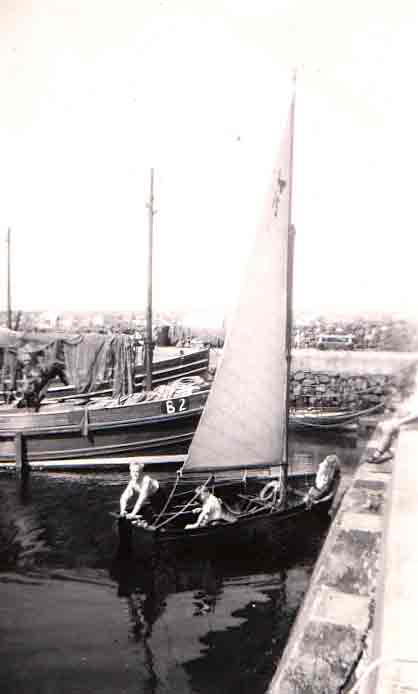 Groomsport, a little fishing harbour which was our first “foreign port.” It is less than two miles from the anchorage at Ballyholme Bay Photo: W M Nixon
Groomsport, a little fishing harbour which was our first “foreign port.” It is less than two miles from the anchorage at Ballyholme Bay Photo: W M Nixon
But there wasn’t that much mischief in us, so it was quite a day when official permission was given to sail all the way to the nearby fishing harbour of Groomsport, our very first Foreign Port of Call. And after that, the south shore of Belfast Lough from Orlock Point to Grey Point was our cruising paradise, and we’d disappear off for the entire day with a basic lunchbox and the hope of augmenting it with mackerel.
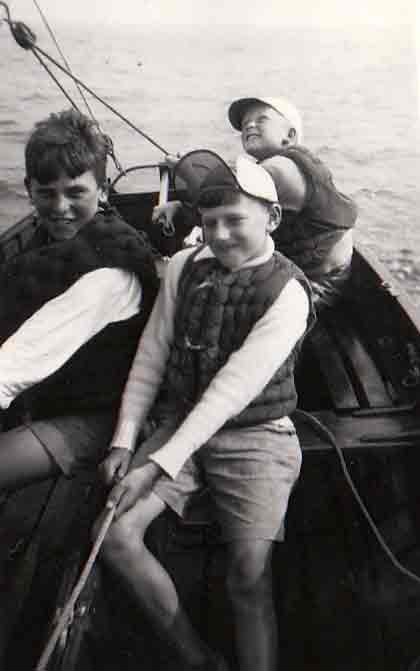 Off for a days cruising, with a lightly packed lunchbox and a couple of mackerel lines to augment the meal. Photo: W M Nixo
Off for a days cruising, with a lightly packed lunchbox and a couple of mackerel lines to augment the meal. Photo: W M Nixo
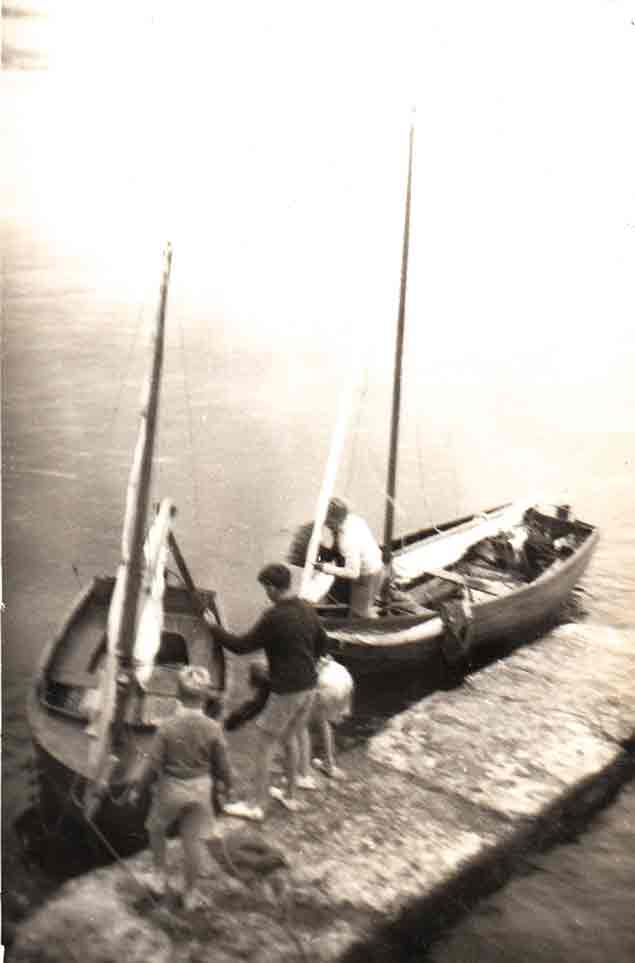 Cruise in company. The fleet gathers at Swinley Bay three miles west of Ballyholme, and lifejackets soon become fenders. Photo W M Nixon
Cruise in company. The fleet gathers at Swinley Bay three miles west of Ballyholme, and lifejackets soon become fenders. Photo W M Nixon
If the wind fell light in the evening, we could row home, and over the years nobody gave our daylong absences any thought. There were some close calls, but we never actually capsized the boat. Which was just as well, for if you capsized an Insect, she stayed capsized, and you were barred for a week from Ballyholme Yacht Club for what was deemed reckless and unseamanlike behavior.
That was how you learned to sail back in the day. Eventually it was reckoned we knew enough to be reasonably harmless to others if we went racing with what was then Ballyholme’s only dinghy class. A long way indeed from the hotshot dinghies of today, and their accompanying coaches in their RIBs.
2017 ISORA offshore racing on the Irish Sea starts this weekend with two coastal races - one in Ireland and one in Wales and with a bumper fleet of 35+ boats expected on the two start lines.
The Dun Laoghaire to Wicklow race starts at 10am and is organised by the National Yacht Club in conjunction with the Royal Alfred Yacht Club.
The Pwllheli Coastal Race, where a fleet of 12 is assembling in the North Wales harbour is one long bay race starting at 1010hrs.
The early forecast is for 14–knot, northerly winds with blue skies, just perfect for sailing.
Both races will be tracked by Yellow brick trackers.
Pwllheli Sailing Club Commodore Eifion Owen is hosting a post race reception.
This year, as previously reported on Afloat.ie, the ISORA fleet will also race under ECHO handicap.
ISORA Yacht Scores in Spanish Offshore 'Salt Race', NYC Adelie Crew Celebrate in Ibiza
After a very successful tenth ISORA season last year, offshore campaigner Peter Hall from the National Yacht Club in Dun Laoghaire decided to relocate his Beneteau First 34.7 and try his hand in warmer climes! Adélie went south last autumn and is now based in Ibiza, and this was the first race of his season.
It is the 30th anniversary of the Ruta de la Sal regatta (Salt Race) and the first time they've had a Salina class in the race - for boats skippered by a female (Mairead Ni Cheallachain in the case of Adelie pictured below with trophy) and with at least 50% female crew (Adelie had Antonia O'Rourke, Louise Dwyer, Susan Delaney, Noel Butler and Sam Hunt as well as Peter and Ni Cheallachain). It's an initiative by the Spanish to try and encourage more female participation in offshore racing. There were seven boats entered in the Salina class (2 x First 40.7, X302, Oceanis 43, Bavaria 50, Sunfast 32 - all Spanish boats).
92 boats overall raced from Denia on the mainland, south around Formentera and then north around the Ibiza coast to a finish in San Antonio, Ibiza - a course of roughly 125nm.

The race took just over 26 hours in starting in beautiful moderate champagne sailing conditions, which overnight fell to very light, leading to some very tactical, technical racing!
In the overall fleet Adelie came 13th of 92 - in her racing class A3 they came 6th of 20 and won the Salina class ahead of the two local 40.7s
Results are here
National Yacht Club Junior Sailors Celebrate Links to Olympic Silver Medal & America’s Cup
A very special Golden Jubilee coming up in May provides links to an Irish Olympic Sailing Silver Medal, the Fireball World Championship, and the America’s Cup. W M Nixon finds the widest connections go even further than that to include a pioneering world voyage.
It was in May 1967 that the irrepressible Carmel Winkelmann oversaw the first results of a junior sailing initiative at the National Yacht Cub, her home club in Dun Laoghaire. It became a movement which went on which to have nationwide and worldwide ramifications, so much so that within Ireland we’re looking at an unbroken line in Irish sailing which is continued through the club which currently holds the title of ISA Training Centre of the Year, which for 2017 is Foynes Yacht Club on the Shannon Estuary.
That a successful club at the heart of the Atlantic seaboard can trace an almost magic thread back to something which happened at a club on Dublin Bay a long time ago is quite a story in itself. Particularly when the Atlantic seaboard club itself is imbued, as Foynes is, with the spirit of legendary circumnavigator Conor O’Brien. However, when the story is shaping up to continue with the Golden Jubilee as the latest chapter, it gives us an opportunity both to celebrate, and take stock of what it has all meant.
 Foynes Yacht Club, heirs to an Irish tradition of junior sail training which was first formalized by the National Yacht Club 50 years ago. At the Irish Sailing Awards ceremony when Foynes were announced as winners of the ISA Training Centre of the Year Award were (left to right) Simon McGibney (Foynes Senior Instructor), Sailor of the year and Olympic Silver Medallist Annalise Murphy of the National Yacht Club, Elaine O’Mahoney (Foynes Sailing Academy Manager), Pat Finucane (Sailing Academy Principal) and Conor Dillon (Instructor). In a club which is imbued with the spirit of world-girdling Foynes sailor Conor O’Brien, it’s particularly appropriate that Conor Dillon’s sailing CV includes winning the Two-Handed division in the Round Ireland Race, sailing with his father Derek Dillon on a 34-footer. Photo: Inpho
Foynes Yacht Club, heirs to an Irish tradition of junior sail training which was first formalized by the National Yacht Club 50 years ago. At the Irish Sailing Awards ceremony when Foynes were announced as winners of the ISA Training Centre of the Year Award were (left to right) Simon McGibney (Foynes Senior Instructor), Sailor of the year and Olympic Silver Medallist Annalise Murphy of the National Yacht Club, Elaine O’Mahoney (Foynes Sailing Academy Manager), Pat Finucane (Sailing Academy Principal) and Conor Dillon (Instructor). In a club which is imbued with the spirit of world-girdling Foynes sailor Conor O’Brien, it’s particularly appropriate that Conor Dillon’s sailing CV includes winning the Two-Handed division in the Round Ireland Race, sailing with his father Derek Dillon on a 34-footer. Photo: Inpho
But business first. Anyone who has ever taken part in the Junior Training Programme at the National Yacht Club is hereby alerted – if you don’t know already – that on the evening and night of Saturday May 20th, there will be a very special celebration at the clubhouse. The organisers Carmel Winkelmann and Ann Kirwan are particularly keen to trace those who have moved away, but would find much nostalgic pleasure with the meeting of old friends by returning on this day of days. So if that applies to you, or you know anyone to whom it does, please make contact with the key club administrator whom everyone refers to as “Oonagh at the National”, the proper line of contact being [email protected], tel 01-280 5725.
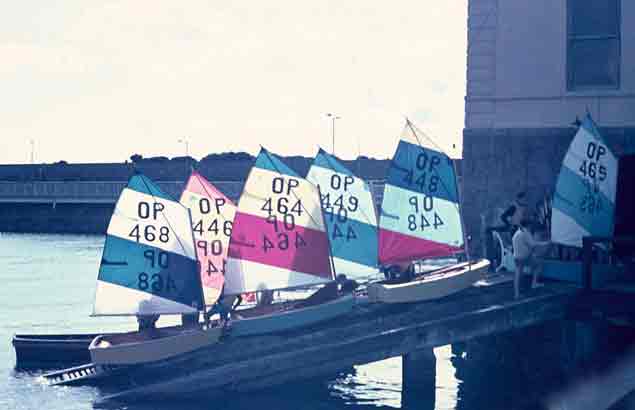 Bright morning of Optimism. The National Yacht Club slipway in 1967, long before the days of an extensive front-of-club platform, with the new dinghies of the Optimist Class being launched out of the cramped boathouse under the club, and down a steep and often very crowded slipway
Bright morning of Optimism. The National Yacht Club slipway in 1967, long before the days of an extensive front-of-club platform, with the new dinghies of the Optimist Class being launched out of the cramped boathouse under the club, and down a steep and often very crowded slipway
To grasp the significance of what is being celebrated, please try to visualize the National Yacht Club as it was fifty years ago. The building itself, standing directly in the harbour, has the air of a fishing lodge in the West of Ireland on its seaward side, and a hint of neo-classicism when seen from the town. But in the early 1960s it was very limited in its shoreside facilites for sailing dinghies. There was a boathouse entered through fine granite arches under the clubhouse itself, but to use it, masts needed to be lowered. It was served by a very steep and easily-crowded slip, while there was access to another slip on the east side of the cub which served a small area where dinghies could be stored. But while there was space for the established classes of Fireflies and some IDRA 14s, some room was also needed for the small tenders for larger yachts moored in the harbour, while the racing keelboats were served by club launches which might be substantial dinghies driven by vintage Seagull outboards.
The concept of a proper dinghy park was still only in its infancy, relatively speaking, for craft such as Dun Laoghaire’s Firefly and IDRA fleets which had been active since the late 1940s. Thus if anyone had a centreboard boat which could reasonably be expected to lie to moorings, she was obliged to do so, and the fleet of small craft lying off the club included the 17ft Mermaids and the 14ft Water Wags.
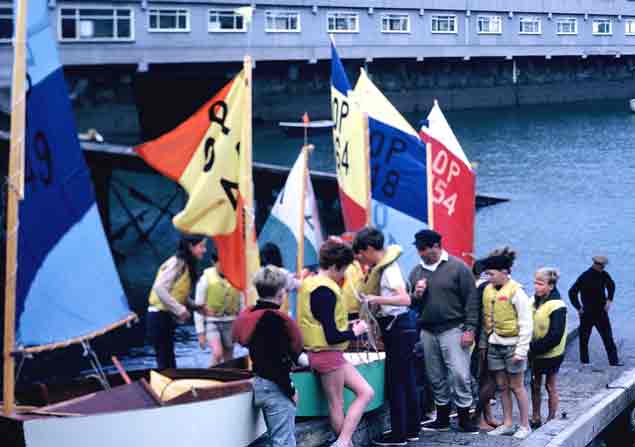 It could get very crowded on that steep slipway. Paddy Kirwan at the centre of a group making do with limited facilities
It could get very crowded on that steep slipway. Paddy Kirwan at the centre of a group making do with limited facilities
To compound the space problems afloat and ashore, during the 1960s the area in the southeast part of Dun Laoghaire Harbour off the National Yacht Club was the focal point for the cross-channel ferry berths. The railway-system serving Mailboat with its emphasis on foot passengers continued to use the Carlisle Pier to the west of the club, but the East Pier was known for a period as the Car Ferry Pier as a busy new roll-on roll-off terminal, which admittedly always had a temporary look about it, had been constructed there to accommodate the new trend in cross-channel travel.
Thus not only was anyone sailing a dinghy from shore at the National YC dong so out of decidedly limited facilities, but they immediately sailed into an area cluttered with a collection of moored boats of all shapes and sizes, and that in turn was set in an area which might have ferry ships berthed close by, or manoeuvring on either side.
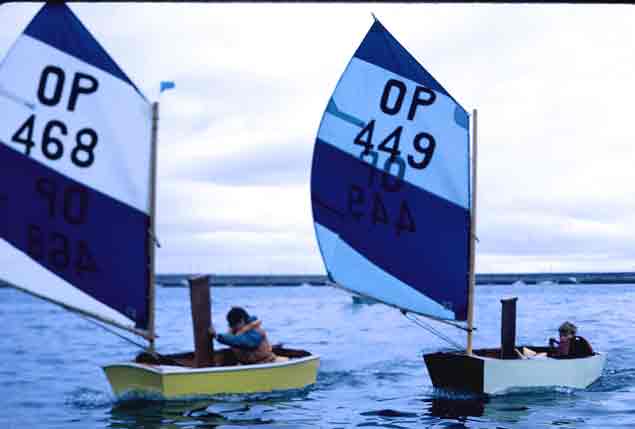 Learning curve. Gina Duffy and John Lavery on a close run in 1967. The latter has won many major championships, including the Fireball Worlds in 1995
Learning curve. Gina Duffy and John Lavery on a close run in 1967. The latter has won many major championships, including the Fireball Worlds in 1995
The comparisons with today’s National Yacht Club with its spacious platform facing out over a much clearer harbour area, and beside it an installation of convenient berthing pontoons, could not be greater. But back in the 1960s, an equally important change was happening – there was a complete re-appraisal of what the most junior sailors really needed in boats and instruction to get the best from the sport.
For sure there were the Fireflies, but in terms of lower age limit they were really aimed at adolescents on the cusp of rapidly growing youth. The other available classes were even more adult-oriented. In fact, the underlying problem was that children going sailing were treated as miniature adults who would somehow pick up the skills of the game through a sort of osmosis, whereas for a crucial period of their lives they would have most benefitted from being treated as a different species, with different boats to meet their needs.
Yet even here, adult views dominated. The grown-ups thought that young people’s boats should at least look like small yachts. Thus a dinghy which was promoted for children by several clubs was the 11ft Yachting World Cartop Heron, which had originally been conceived as a DIY-build which could fit on the roof-rack of the average family car, and was designed with a gunter rig such that all its spars could be stowed within the boat.
It had some good ideas, and with a pretty sheer it fulfilled the adult expectation of what a miniature yacht should look like. But it was surprisingly heavy for its avowed rooftop requirement – you’d have needed a weight-trained family to get it on the car roof. And anyway, it was too large for really small kids who genuinely had the sailing bug.
 The southeast corner of Dun Laoghaire Harbour was very different in 1967, with the East Pier re-designated as the Car Ferry Pier. Yet despite the limitations, the Optimist class quickly caught on after its introduction in 1967
The southeast corner of Dun Laoghaire Harbour was very different in 1967, with the East Pier re-designated as the Car Ferry Pier. Yet despite the limitations, the Optimist class quickly caught on after its introduction in 1967
So a revolutionary approach was needed, and it came thanks to one of the National YC’s international sailing stars, Johnny Hooper. He had achieved Ireland’s first Olympic Race win with Peter Gray in the Flying Dutchman in the 1960 Rome Olympics when the sailing was at Naples. But as an FD campaign towards the 1984 Olympics was prohibitively expensive with the venue in Japan, he returned to his first love of International 505 Racing, and it was at a big 505 championship in Scandinavia in 1965 or thereabouts that he first became aware of the game-changing possibilities of the Optimist for junior sailing.
Scandinavia being rightly renowned for the elegance of its yacht, it speaks volume for the versatility of the Florida-originating Optimist, the “simple little boxboat that sails surprisingly well”, that Scandinavia should lead the movement towards a world body for a boat which, whatever the traditionalists might think, the kids were clearly loving. Founded 1965, the International Optimist Dinghy Association (IODA) had Viggo Jacobsen of Denmark as its first President with his wife Edith as Secretary, and in that same year Johnny Hooper set about introducing the idea of the Optimist to Ireland.
Now if some ordinary Joe had happened to by impressed by an Optimist at some foreign location, and had even brought one home to persuade his fellow sailors that they were looking at the future, the idea probably would have fallen very flat indeed.
But that’s not the Hooper way. Instead, from his highly respected position he quietly targeted fellow National Yacht Club members who were themselves active sailors, but also had children who would benefit from the Optimist experience, and in time a group emerged which was to include initially Johnny Hooper with his wife Bernie giving the longterm involvement, Peter Gray, Paddy & Barbara Kirwan , Don Douglas, Franz & Carmel Winkelmann, Michael McGrath, Arthur Lavery and several others, many of whom had reasonable DIY skills and could see the possibility of building an Optimist in the basement of their Dun Laoghaire homes without too much disruption of the household. By the Autumn of 1966, the project was under way.
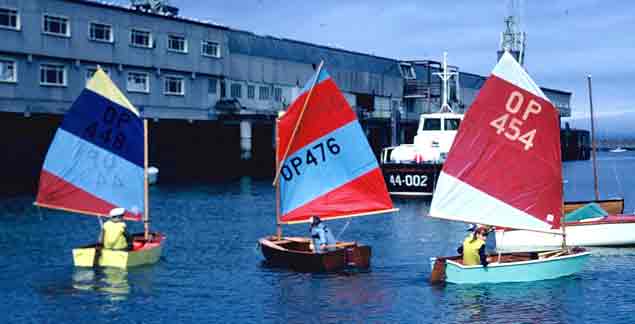 The first of the new fleet sails. Paddy Boyd (left) Ann Kirwan (centre) and Vivienne Lavery right) getting to know their boats
The first of the new fleet sails. Paddy Boyd (left) Ann Kirwan (centre) and Vivienne Lavery right) getting to know their boats
While Johnny Hooper had introduced the idea, he stood back from its continuing implementation, for the Hooper modus operandi was to give an idea enough strength to soon have wings of its own. That certainly happened in the National Yacht Club, for very quickly a manageably small committee was in being, and the formidable Carmel Winkelmann became its secretary. The NYC Junior Programme became her baby, and it always has since been seen as such, even though the number of people involved in administering the programme over the fifty years, as the NYC facilities have expanded and developed to meet the needs of a modern membership, will now run into the hundreds.
In fact, properly organized junior sailing with boats specifically designed for young people’s needs is now so central to Irish sailing that it takes a huge leap of the imagination to visualize the scene as the first small group of National Yacht Club Optimist Dinghies – most of them locally-built either by amateurs or professonals – began to emerge in May 1967 with numbers increasing as each weekend passed. New they may have been, but they reflected their era, with a public Blessing of the Boats outside the Brindley household as a new batch of boats appeared.
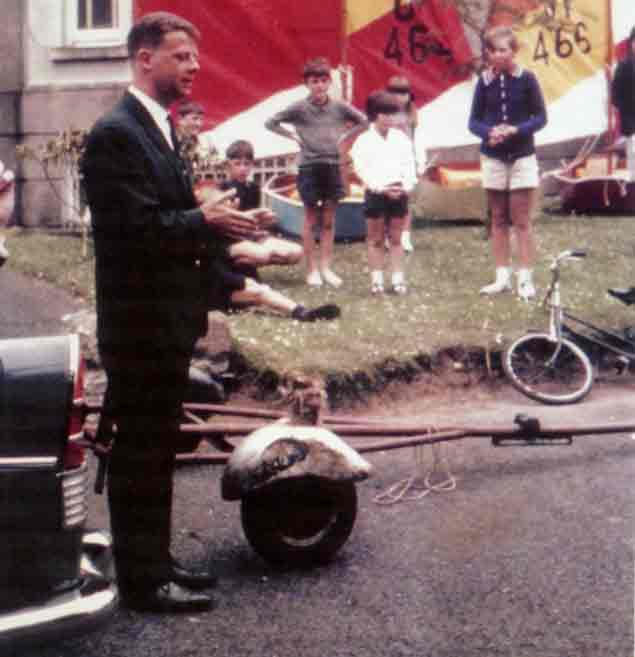 Olympic sailor Johnny Hooper speaking at the Blessing of the Boats as a new batch of home-built Optimists awaits transfer to the National’s limited space.
Olympic sailor Johnny Hooper speaking at the Blessing of the Boats as a new batch of home-built Optimists awaits transfer to the National’s limited space.
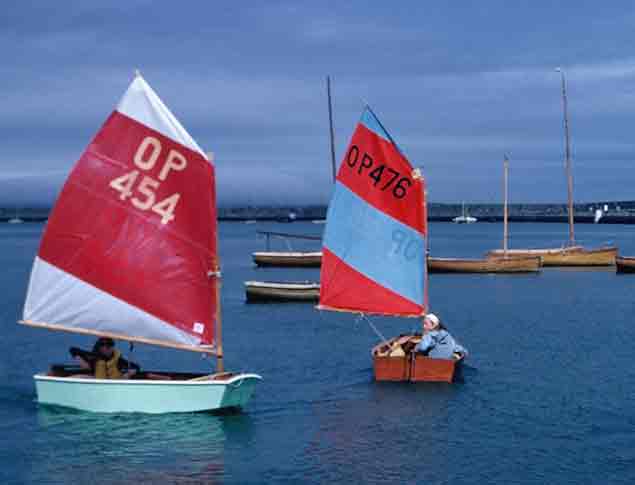 Dun Laoghaire was a different place in those days, with Water Wags and Mermaids expected to lie to mooring. Vivienne Lavery and Ann Kirwan testing their skills with the new Optimists – Ann’s boat (476) was one of the few professionally-built in the first batch of Optimists, she was created by the legendary Skee Gray
Dun Laoghaire was a different place in those days, with Water Wags and Mermaids expected to lie to mooring. Vivienne Lavery and Ann Kirwan testing their skills with the new Optimists – Ann’s boat (476) was one of the few professionally-built in the first batch of Optimists, she was created by the legendary Skee Gray
But though most young sailors in theory had his or her own boat, before anything approaching full fleet numbers was approached they’d a habit of letting anyone sail some boat or other in the early stages, so much so that although Ann Kirwan was part of it from a very early stage, she admits that even she can’t claim total accuracy when identifying the helm of a known boat.
 Going abroad......the new Dun Laoghaire Optimists make their debut at Bray Regatta: Paul, Adam and Lucy Winkelmann with Paddy Kirwan putting in his renowned act as a South American Air Marshall at Bray Sailing Club.
Going abroad......the new Dun Laoghaire Optimists make their debut at Bray Regatta: Paul, Adam and Lucy Winkelmann with Paddy Kirwan putting in his renowned act as a South American Air Marshall at Bray Sailing Club.
This habit of inter-changing sailors became even more marked in that first year when the early class discovered that the most useful base for their day-time sailing was the little-used Irish Lights service barge moored in the western part of the harbour. Over there, NYC Optimist sailors found much clearer sailing water, and they were well away from the comings and goings of the two cross-channel ferries off their home club, not to mention excessive parental control. In effect, the barge became their day-time base, and they ate their packed lunches aboard it while deciding who would take which boat for the first stage of the afternoon’s sailing. Fifty years down the line, we might well wonder if the Commissioners of Irish Lights are aware of the key role their humble barge played in launching Ireland’s Junior Training Programme.....
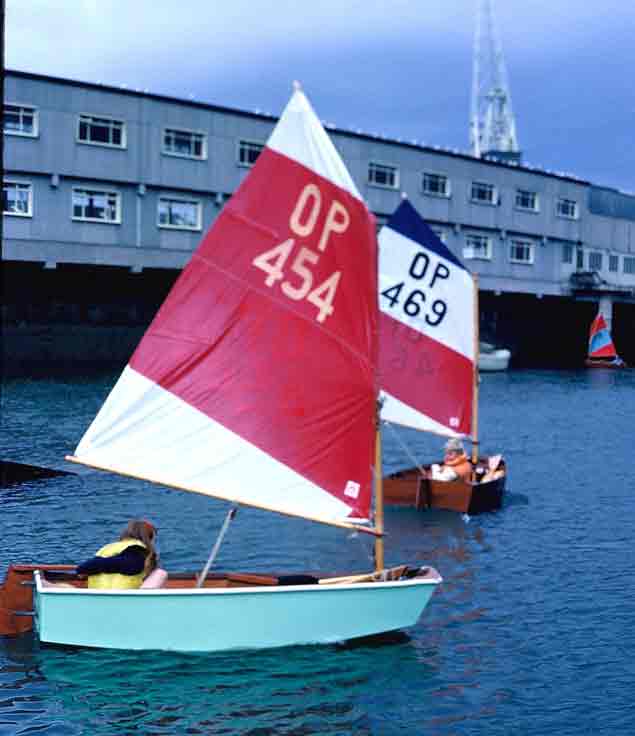 Vivienne Lavery and David Ryan getting away from the slip.
Vivienne Lavery and David Ryan getting away from the slip.
Once launched in its viable form in 1967, there was no stopping it, and the names which have emerged just from the National’s junior programme alone (for virtually all clubs now have one) take us over an extraordinary range, and up to the heights of Olympic participation, the winning of major world dinghy championships and associations with the America’s Cup.
It’s Johnny Smullen who provides the latter. The California-based Johnny Smullen in San Diego is now of world stature in anything to do with yacht and boat-building or indeed in marine construction generally, and his talent has been recognized at the highest level as he has worked on major projects for the very demanding Dennis Conner, aka Mr America’s Cup.
Johnny will have inherited his feeling for classics from his father Cass, a great sailor who was such an enthusiast for the Dublin Bay 21s in their original rather spectacular gaff-rigged form that when the class contemplated changing to a more easily-handled and convenient Bermudan rig in 1963, Cass claimed that he could easily rig a gaff-rigged DB 21 in 15 minutes flat. And that included setting the jackyard topsail to perfection. So he brought a DB 21 close into the clubhouse (as you could in those days), and in front of a drink-sipping crowd of observers on the verandah, he did the job within 15 minutes. But they still went ahead and converted to Bermudan rig.
Son Johnny meanwhile was enlisted in the NYC Junior Programme as soon as he reached he lower age limit, and when the 40th Anniversary was being celebrated back in 2007, he sent on his memoirs which well capture the flavour of it all:
San Diego, 17th May 2007
The way I saw it.
I am eight years old and my parents are wondering what to do with me for the summer, it went something like this: “Get him out from under our feet”. I was equally happy to stay at home and play in the back garden, invent stuff and dream up ways to frighten my sisters. Chasing them with worms was a good one.
I was enrolled in the adventure of my life.
At first I was lead to believe it was going to be a fun thing with the opportunity to meet new people and friends, maybe making me more sociable as I was quiet child in a world of my own. I bought into this and showed up for the first day. It was great, lots of people all different shapes and sizes, so there we were all sitting around playing with stuff and one-upping on how my father is better than yours, especially at snooker. The chatter fell silent when along came this very tall white-haired lady with an incredibly loud voice. It was at this point I became suspicious as I had just watched Paths of Glory and A Bridge Too Far, I had seen how the enemy rounded up people and put them in trucks and brought to places, unfriendly places.....
We arrived at Sandycove harbour where we were lined up on the pier. I though this was it, we were then forced to line up at the steps and walk down into the freezing water fully clothed and flail around, there were guards (instructors we were led to believe) everywhere, and just to make sure the torture was effective they made us hold our heads under water for 30 minutes, well 30 seconds, but it felt like minutes. Then we were all forced to walk back to the NYC where our fate was to be determined. Freezing and scared, I was cursing my family and wondering what I had done to them.
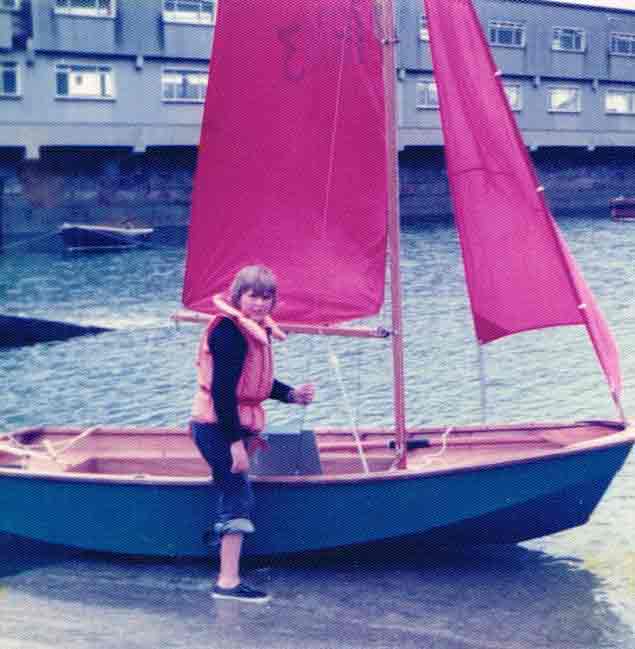 He survived.....eventually Johnny Smullen became a keen Mirror dinghy sailor, but he was pessimistic enough to call his boat Splinter
He survived.....eventually Johnny Smullen became a keen Mirror dinghy sailor, but he was pessimistic enough to call his boat Splinter
We arrived back at Camp NYC and were lined up and made to wear large cumbersome protective coats, some were yellow, purple, some orange, I guessed they were labelling us, something to do with our religion. Some of these jackets had large protective collars probably to help protect us from the beatings to come, I thought. Our names were branded onto the “Life Jackets” as I started to call them, knowing they would play a key role in our protection.
We were divided into groups and lead away by the guards into this large damp room with arches and a dank smell of cotton, hemp and mould. This was where we were to remain for all the rainy days to be brain-washed, they started by teaching us knots. I was convinced this was going to be how to tie the very knot that would be the doom of us, I compared it to carrying the cross of Calvary. I decided then to be really bad at it in the hopes that one of my knots would slip open and I could dash to my freedom. We also had to jump up, and hand-over-hand along the light blue steel beam that ran across the dark room, this was to make our arms really strong, they had a plan for strong arms – I will tell you about that a little later.
Food consisted of a march up to Wimpeys for a spice burger and chips all drowned in vinegar to disguise the taste, if there was good behaviour we got to go to the Miami Café. The day was long (except Thursdays when we had to get out early) and after a week in Boot Camp we were all tired and weary. What had I done to my family to deserve this?
The second week came along and we were introduced to the ships, rather large wooden craft resembling a landing craft with the flat bow (I was always looking for the hinges). This is where the strong arms came into. We were grouped into six per team, and the guards waited until low tide when we had to carry the ship down a rickety wooden slip (there’s a reason for calling it a slip). Upon its surface there were large wooden rollers but we were forbidden to use those rollers, and to make sure they filed a fat spot on the rollers, deeming them useless. We picked up the incredible heavy boat, all six of us, one on each corner holding a knee, and two in the middle by the oar locks. Later I was to learn the place to be was up at the bow (by the door), it was lightest. I was adapting to this cruel camp. As we descended down to the icy water again fully clothed, we came across a bright green pungent slime. I had what I thought were special sailing shoes, but as soon as I touched the slime I was down. Down hard. The guards started yelling, I knew I had to get up quickly....remember Calvary!....We reached the bottom and stopped, the guards yelled again and made us wade right into the icy deep, still fully clothed. With the landing craft now floating, we had to master manoeuvring, the craft were lined up alongside the slippy slip, that’s the reason they call it a..................
I stepped on the gunwhale. Now at this point I did not understand the physics like I do today, and when you apply a load to any point of the gunwhale of a flat-bottomed craft two things will happen (once only). The opposing gunwhale will come up as you travel down, and because I am as tall as the craft is wide, somewhere in the middle he two surfaces will meet, your face and the opposing gunwhale. After the initial shock, the second shock comes from the icy cold water. Then I found out what the large collar was for as the guards hauled me out of the abyss semi-conscious. Once inside the craft, we were grouped into two and handed oars. Let the games begin.....
After a week of rowing and shipping oars and coming alongside we were all adapting well to boating, there’s nothing to it. Just as we are enjoying ourselves, we are reminded that this is a work camp with launch and retrieval exercise twice a day. The launch and retrieval is carefully timed at 6 and 12 hours intervals to make sure it was low tide and we’d the longest slimiest walk up the rickety slips, observed closely by the guards from the window of the snooker room glaring down at us. Boating is turning out to be challenging but fun, and the new friends are all pitching together to eventually plan an assault on the guards to free ourselves.
The third week came along and there were large wooden poles with white canvas and a stick with notches cut out of it, why on earth did they have to make it harder? It was perfectly simple with the clean decks and oars and oar locks, now the boats are so heavy with this rig up, my bow lifting position is not that smart as we carry down the slip with the sail pressed hard against my face. After countless days of theory brainwashing in the damp room, we have to pass a few tests to prove worthy to sail, if called upon, out to the US Aircraft Carrier John F Kennedy anchored out in Dublin Bay. The first test was to take the stick with the notches and stretch out the canvas and hook onto a rope loop, without falling over this was harder than carrying the feckin’ boat, the second was to line up two pins while hanging over the transom full of chips and spice burgers. If it had hair....
Most of us mastered that task after a few tries, and it wasn’t long before we were sailing out to the sterns of the ferry Hibernia or Cambria, whichever was in port at the time. This went on for a few weeks and as we settled into the routine it got easier as we went on.
During the time in the damp boathouse, usually when it was blowing dogs off chains outside and while I was trying to get the batteries out of the loudhailer, I noticed a beautiful varnished clinker planked boat, it was almost new, and a very wise man was looking after it. This Man was tough as the rivets holding it together and knew everything about the seas. I knew if I paid attention he would help get me through the summer, he did and he is almost responsible for what I do today. Thank you Jack!
The discipline of Boot Camp had turned us into great sailors, great card players, snooker players....it wasn’t until the third stage we found flagons. But not on the night of May 17th 1975, I was at home doing my homework that night....
Ah.....the memories, I hope I have stirred a few, it was the most wonderful time of my life and I wish I was there to get drunk with all of you and play cards till the wee hours, but meanwhile thanks
To Carmel, thank you very much; I always have my lifejacket.
To Jack Brennan, I am always thinking of you up there, and thanks for teaching me how to tie my shoelaces.
To all the instructors Paul, Ann, Jimmy, I never believed the story of the rabbit and the tree, but thanks anyway
And to all my dear family and friends
Lots of love, Johnny Smullen
PS It was me that stuck the coke bottle in the cannon at the front of the club....
 Johnny Smullen and Dennis Conner inspect the hull of the 1925-built Cotton Blossom
Johnny Smullen and Dennis Conner inspect the hull of the 1925-built Cotton Blossom
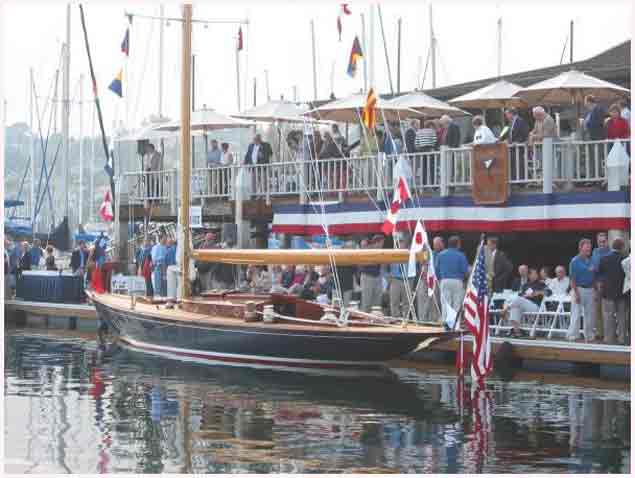 Cotton Blossom II after restoration by Johnny Smullen
Cotton Blossom II after restoration by Johnny Smullen
Inspired by Jack Brennan and other master craftsmen, Johnny has gone on to become a shipwright of such skill from his base in San Diego, California, that he in turn inspires others, one of his most famous projects being the complete restoration of the 49ft Q Class sloop Cotton Blossom II of 1925 vintage.
When a complete restoration is contemplated, Johnny doesn’t mess about. The word is that when he and Dennis turned up to finalise the deal on Cotton Blossom and bring her back to San Diego, they found the previous owners sorry enough to see her go, and rather proud of the style in which they’d maintained her. But after they’d gone to sort the details with the new owner, they went to take a last look at the boat. It’s said they found that Johnny had already delivered his opinion on the existing rig by cutting the shrouds and stays at the deck with bolt-croppers, and cutting the old mast off at deck level with a chainsaw.
Maybe that’s an apocryphal Johnny Smullen from taking delivery of another boat. Yet when you see Cotton Blossom in her restored form, it’s clear what Johnny says should indeed be Holy Writ. This is a project of world standard. But what’s even more remarkable is that despite everything the Sailing Boot Camp at the NYC might have inflicted on him all those year ago, Johnny’s love of boats and sailing is such that he has his own personal sweet classic, the lovely 36ft International One Design Altair. She’s sailed as often as possible, and though he can’t make it back to Dun Laoghaire next month for the Golden Jubilee as there’s very major project under way, Altair will be racing with the San Diego classics under the National Yacht Club burgee.
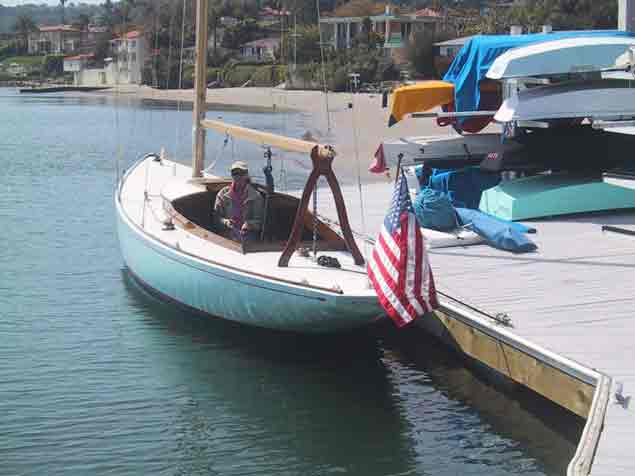 Johnny Smullen’s own pet boat Altair reveals his abiding love of sailing.
Johnny Smullen’s own pet boat Altair reveals his abiding love of sailing.
John Lavery’s father Arthur was another of those pioneering Optimist dads back in the late 1960s, and John and his sister Vivienne were both in that first batch of trainee sailors. He ended up winning championships in more classes then you could quickly count, but the peak of it all came in September 1995 when he and David O’Brien of this parish won the Fireball Worlds in Dublin Bay.
In fact, the graduates from 50 years of a junior training programme at the National YC can be found in successful positions in many boat classes in many places, but it is the club’s outgoing attitude to those who wish to learn to sail which deservedly provided its most outstanding success. A long time ago a Mrs MacAleavey, a widow with no sailing connections, was looking for a club which would make her increasingly boat-mad daughter Cathy – who had recently bought a clapped-out 420 – feel encouraged in any way to learn to sail. Despite the fact that it was still in process of recovering from a fire in the clubhouse, the NYC showed itself the most welcoming along the Dun Laoghaire waterfront, so much so that Mrs McAleavey felt sufficiently encouraged to buy her daughter a new 420, and that in turn led on eventually to Cathy representing Ireland in the women’s 470 in the 1988 Olympics.
The three children she had with husband Con Murphy went on to get their introduction to sailing through the National YC’s junior programme, and daughter Annalise emerged with the talent and the burning ambition which resulted in a heart-breaking fourth at the 2012 Olympics in the Women’s Laser Radial when a medal had seemid almost certainly within her grasp. But memories of that were entirely laid to rest with the Silver Medal in the 2016 Olympics Rio after a difficult final race in which the lone sailor seemed to stay as cool as you please, while the nation at home watched with bated breath.
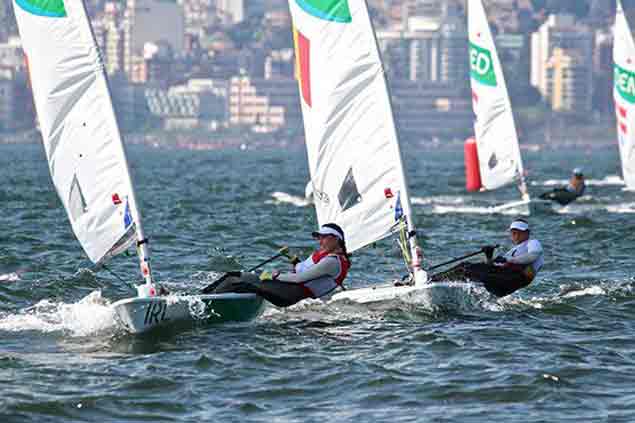 The medal-winning moment as Annalise Murphy crosses the finish line in Rio to win Silver.
The medal-winning moment as Annalise Murphy crosses the finish line in Rio to win Silver.
That it was ultimately a very personal achievement is something respected by her club, and they claim to have done nothing more than provide the first steps on the pathway, and a general spirit of encouragement. But nevertheless the success is all of a piece with the Golden Jubilee which will be celebrated on May 20th, and Carmel Winkelmann continues in her mission of providing a background of training for young sailors of all types, whether they aim only to be a competitive club sailor, or whether they aim for the ultimate heights.
Thus one of her projects in recent years was to find real support for young Finn Lynch, who had reached that difficult stage of being a top junior sailor, yet still had to find his feet as an adult. Thanks to support raised by Carmel, he became Ireland’s representative in the Men’s Lasers at Rio despite going through the final stages of the selection with a training injury recovery problem which may have had an adverse effect on his performance in as the youngest sailor in Rio, aged just 20.
Whether or not he would have been better off not being in Rio at all is neither here nor there. When you’re 20, four years can seem an appallingly long time. The Tokyo Olympics in 2020 must have seeemed aeons away for a young sailor who had shown many flashes of real talent. It was better for him to be in Rio while learning a lot, rather than kicking his heels in frustration in some dead end. And when he needed material help to see through the campaign, it was Carmel Winkelmann who was there to make to ensure that support was available. That will be something else for celebration on May 20th.
 Carmel Winkelmann and Finn Lynch at the National Yacht Club, June 2016. Photo W M Nixon
Carmel Winkelmann and Finn Lynch at the National Yacht Club, June 2016. Photo W M Nixon
Time was when the Dun Laoghaire to Dingle Race was promoted as a handy way to position your little old cruiser in West Kerry to be nicely placed to make her way in gentle hops back to her home port on the south or east coast, ambling in leisurely stages along one of the finest cruising grounds in the world writes W M Nixon.
It was envisaged primarily as a sort of enlarged club race, the club setting the tone being the National Yacht Club in Dun Laoghaire. There, enthusiastic members and Dingle race plotters Martin Crotty, Peter Cullen and Brian Barry added a further attraction when promoting the first race, as it drew nearer in 1993, by suggesting that real dyed-in-the wool cruising types might find the race of interest if they were thinking of continuing with a clockwise cruise on round Ireland.
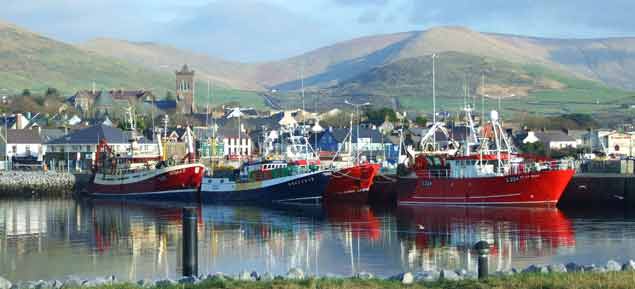 Dingle Harbour makes for an attractive destination...
Dingle Harbour makes for an attractive destination...
 …while its marina is enticing for cruisers and racers alike
…while its marina is enticing for cruisers and racers alike
Lovely idea. But so far as I know – though it’s very much hoped that I’ll be rapidly informed otherwise – it is this goggle-eyed wordsmith focused on his ancient computer screen who is still the only cruiser-racer skipper who has completed the Dun Laoghaire to Dingle Race, and then cruised on round Ireland.
We did it in handy stages, leaving the boat in Dingle for ten days after the race was completed to return home to the word-production coalface, then going on to leave her on a mooring we’d laid at Arbear at the head of Clifden Bay after we’d cruised the Aran Islands and Connemara in detail, followed by another return home for the manufacture of merchandisable verbiage. Then the third stage was home to Howth round the top, with Donegal doing its best to rival Kerry for dramatic scenery.
However, that was all a very long time ago. In fact, it was so long ago it was the first time I’d sailed with a proper pair of Dubarry Shamrock Goretex boots. I’d previously had an experimental leaky pair from a different manufacturer with which I’d persisted for years, so I can still remember the sheer joy of dry warm feet whatever the weather after the genuine Dubarrys had been deployed.
But enough of such ramblings - even if it does serve to remind us of the way the Dun Laoghaire to Dingle Race has become a much-loved part of our sailing world. And as for the reason for people not cruising on round Ireland when being in Dingle leaves them so handily placed for continuing the circuit - the answer is simple. The fact is that the course of almost 300 miles has taken them as swiftly as possible past some of the most glorious cruising places in Ireland, and the only way the skipper can keep his shipmates plugging on is by swearing on all that is holy that they’ll cruise gently back the same way in a much more civilised style.
In such circumstances, you’re whistling against the wind in trying to sell the coast of Connacht as the more interesting way to get home. Yet from an early stage, even the notion of the Dingle dash as having a strong cruising orientation hasn’t really held up for a significant part of the entry. People go into it with every intention of winning, and the talk of conveniently positioning the boat for a spot of cruising in Kerry and West Cork has only been smoke and mirrors.
![]() The Yellowbrick record of the Dun Laoghaire-Dingle Race in 2015. Sometimes the fleet has been even more widely spread than this
The Yellowbrick record of the Dun Laoghaire-Dingle Race in 2015. Sometimes the fleet has been even more widely spread than this
The pace was set from the off in 1993, when the winner was Richard Burrows’ Sigma 36 Black Pepper. In subsequent years, she was cruised to Greenland and other Godforsaken spots in the ownership of fellow Malahide sailor Peter Killen, so Black Pepper has a boat history which must make her the best-used Sigma 36 ever. Certainly for the Dingle dash of 1993, skipper Burrows shipped aboard the formidable talents of Peter Wilson and Robert Dix as the main occupants of the driving seat, and Black Pepper had a wellnigh perfect race.
That said, at the riotous prize-giving afterwards – the Dingle prize-giving is always riotous, just relax and enjoy it – Black Pepper’s skipper gave a wildly funny speech which he rounded out by presenting Robert Dix with the Golden Blanket Award. As to what was meant by that I haven’t a clue, so you’ll have to ask Dixie himself. But as he has been winning major awards of every kind since 1970 when he became the youngest ever Helmsmans Champion, the Golden Blanket goes well in his trophy cabinet.
With the first race off to such a humdinger inauguration, the vision of the founders had been justified. Well, perhaps “vision” is overstating it. At this week’s launching of the 2017 staging, which will be on June 14th, longtime organiser Martin Crotty revealed that the idea of the Dingle Race came about almost by misadventure.
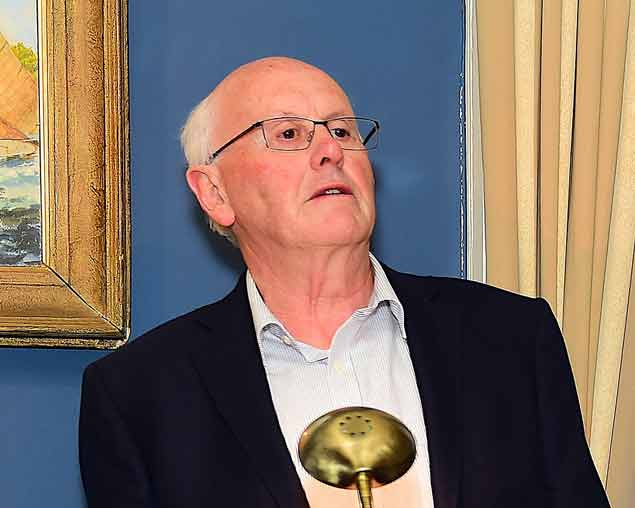 The founding Dingle Race organiser Martin Crotty reminiscing about the early days in 1993 at this week’s reception in the National Yacht Club. Photo Michael Chester
The founding Dingle Race organiser Martin Crotty reminiscing about the early days in 1993 at this week’s reception in the National Yacht Club. Photo Michael Chester

He and fellow owner Peter Cullen had been doing the 1992 Round Ireland Race with their hefty Sigma 41 Koala, and in slugging up the west coast into a particularly unpleasant northerly (I remember that one too), their mainsail went into several pieces on the latitude of Loop Head, so they retired and ran back to Dingle, a place they didn’t know at all.
They got to know it very well indeed over the next day or two, and the hospitality the little West Kerry port meted out to them – with the Dingle Skellig Hotel more or less providing open house – soon got them thinking that a race there rather than sailing all the way round the Emerald Isle would be an interesting alternative in the years when the biennial Round Ireland Race from Wicklow was not being staged.
Such ideas seem marvellous over a pint or three as midnight draws on, then fade from the memory. But there was some special chemistry already at work between the can-do Dun Laoghaire sailors and the maritime-minded folk of Dingle. Perhaps it’s because both ports think they’re the hub of the universe…… Whatever the secret ingredient, by 1993 in Dingle Harbour, Master Brian Farrell was ready to welcome the fleet, a new marina was in the making, and Dingle was on the cusp of an entirely new era.
 Dingle in the far west of Kerry has formed strong links with Dun Laoghaire in Dublin Bay, yet the two places could not be more different.
Dingle in the far west of Kerry has formed strong links with Dun Laoghaire in Dublin Bay, yet the two places could not be more different.
As for the Dun Laoghaire to Dingle Race, we knew it was fully part of the scheme of things by 1995, as Denis Doyle turned up to compete with Moonduster. Once that happens, you know your race has arrived, and “The Doyler and The Duster” were honoured participants for many years, encouraging some very substantial boats to subsequently take part, with new heights being reached in 2009 when Michael Cotter’s handsome 78ft Whisper brought a touch of global glamour and a new record, though she missed the magic 24 hours by 43 minutes and 45 seconds.
As each race succeeded its predecessor, a bonus emerged when it was acknowledged that the Dun Laoghaire to Dingle would count as a qualifier for the Fastnet Race, which would as usual be staged about eight weeks later. By this stage the race had so much going for it that it seemed impervious to setback, but like everything else in Irish life, it went through diminished times during the recessionary years.
 When “The Doyler and The Duster” (Denis Doyle and Moonduster) became involved from 1995 onwards, the Dun Laoghaire to Dingle race was made. This is a page from the August 199 Afloat magazine, with Moonduster much in evidence in the race report. The winner that year was Donal Morrissey’s GK34 Joggernaut from Galway, and in those days the start was in Dun Laoghaire Harbour.
When “The Doyler and The Duster” (Denis Doyle and Moonduster) became involved from 1995 onwards, the Dun Laoghaire to Dingle race was made. This is a page from the August 199 Afloat magazine, with Moonduster much in evidence in the race report. The winner that year was Donal Morrissey’s GK34 Joggernaut from Galway, and in those days the start was in Dun Laoghaire Harbour.
But then came 2015, and the numbers were back up, and then some. Having seen his pet project through times good and bad, Martin Crotty had indicated that this 12th Dun Laoghaire to Dingle Race would be the last he would personally administer, but already a strong successor was being briefed in the person of Adam Winkelmann. And in the 2015 race he had a vintage familiarisation to observe how it all worked, though as his mother Carmel was for many years one of the time-keepers, he started from a position of inside knowledge.
Over the years, the Dingle Skellig Hotel, which showed such generosity to the sea-battered crew of Koala way back in 1992 – leading to the inception of the race – has stayed on board as co-sponsor, and everyone’s longterm faith in the event was born out in 2015’s race, which was a classic. Before it, the atmosphere around the National Yacht Club was pure carnival, and while the start may have been slow, the winds soon filled in from the north and the fleet scampered down the east coast.
Out in front, the line honours battle was between Adrian Lee’s Cookson 50 Lee Overlay Partners from Dun Laoghaire and Anthony O’Leary’s Ker 40 Antix from Cork, and they went so well that for a while it looked like Antix might get the corrected time win. But holes in the wind at the Fastnet and beyond shook up the order, and by the finish it was glory day for J Boats, with the Shanahan family’s J/109 Ruth (NYC) winning by 20 minutes from her Pwllheli-based sister-ship Mojito (Peter Dunlop & Vicky Cox), the first foursome being very complete for the Johnstone brothers as the J/122 Aurelia was third and the J/109 Dear Prudence was fourth.
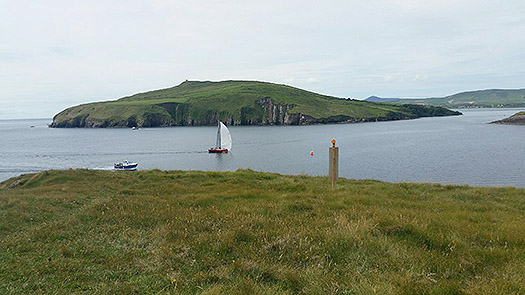 Anthony O’Leary’s Ker 40 Antix crossing the finish line at Dingle in 2015
Anthony O’Leary’s Ker 40 Antix crossing the finish line at Dingle in 2015
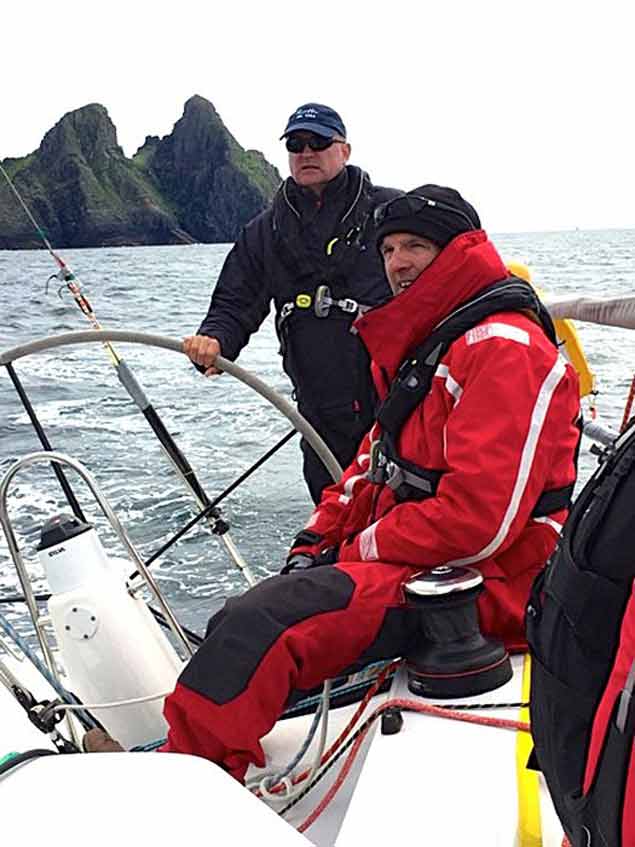 Overall 2015 winner Liam Shanahan at the helm of his J/109 Ruth with Skellig Michael put astern, and crewman Kevin Daly trimming the main for the final stage up Dingle Bay to the finish.
Overall 2015 winner Liam Shanahan at the helm of his J/109 Ruth with Skellig Michael put astern, and crewman Kevin Daly trimming the main for the final stage up Dingle Bay to the finish.
 After a rugged race, there’s nothing like an al fresco party at Dingle
After a rugged race, there’s nothing like an al fresco party at Dingle
But in a fascinating contest, almost every boat was having her day at one stage or another, and for those who were doing the race as a Fastnet qualifier, it came up trumps. Irish Offshore Sailing’s 36ft Jeanneau Desert Star may have only been in the middle of the fleet in the Dingle results, but her crew were on a learning curve and on top form by the time they did the Fastnet Race, so much so that they won overall in the 33-boat fleet making up the Sailing Schools Division, a well-earned dream result for skipper Ronan O Siochru.
So Martin Crotty handed over a prestigious event in really good order to Adam Winkelmann after all the D2D business was done and dusted in 2015, and this week’s launching reception in the National Yacht Club for what is now the Volvo Dun Laoghaire to Dingle Race was one of those gatherings which ticked so many boxes that we could get a month’s worth of Sailing on Saturdays out of it.
The heartwarming sense of continuity was palpable. Not only was Adam Winkelmann taking over the D2D from Martin Crotty, but in the host club, Ronan Beirne had been barely a wet week as the new Commodore in succession to Larry Power. To say that the speeches were in tune with the mood of the evening barely gets the flavour of it. It was a time for nostalgia, a time for relishing the present, and a time for keenly anticipating the future, with all aspects covered.
 Adam Winkelmann, chair of the Volvo Dun Laoghaire Dingle race Committee, reveals his hopes for 2017’s race and the races beyond. Photo: Michael Chester
Adam Winkelmann, chair of the Volvo Dun Laoghaire Dingle race Committee, reveals his hopes for 2017’s race and the races beyond. Photo: Michael Chester
It was Adam Winkelmann who summed it all up in a friendly presentation – he does it so painlessly that the word “speech” is way too pompous – effortlessly telling us about the new dynamic with the lineup with Volvo, the continued support from Dingle with the Dingle Skelligs Hotel joined by Crean Brewery – and the growing interest from the RORC with that club’s Janet Grosvenor – a very good friend to Irish offshore racing – planning to monitor the Volvo Dun Laoghaire to Dingle Race 2017 with a view to giving it greater recognition in the RORC’s 2019 programme.
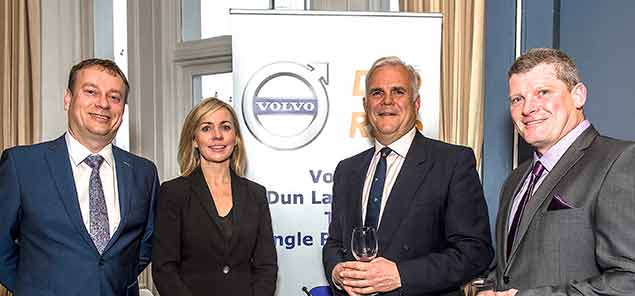 Graham Fitzgerald of the Dingle Skellig Hotel, Patricia Greene of Volvo Car Ireland, Adam Winkelmann, and Jerry O’Sullivan of Crean Brewery, Dingle. Photo Michael Chester
Graham Fitzgerald of the Dingle Skellig Hotel, Patricia Greene of Volvo Car Ireland, Adam Winkelmann, and Jerry O’Sullivan of Crean Brewery, Dingle. Photo Michael Chester
As it is, the 2017 race will start on the evening of Wednesday June 14th, which research among competitors has show is reckoned as the most user-friendly time for those fitting the race into work breaks, as it means you can definitely do a three day week, yet have every chance of making the clock-in at the workplace first thing Monday morning.
Thus the prize-giving will be on Saturday night, and it is being moved beck to the Dingle Skelligs’ sister establishment, Benners Hotel in the heart of town. As for the bigger picture, the timing also allows a useful gap before the Sovereigns Cup series starts at Kinsale on June 21sr, but while the start time will be tight for anyone who also plans to also do the ICRA Nationals at Crosshaven from Friday June 9th to Sunday June 11th, in times past we’d have reckoned that’s it a logistical challenge which is do-able, you just draw lots for the three guys who are going to take the boat to Dun Laoghaire as soon as the last race at Crosser is over.
As if that’s not enough of a challenge, Ric Morris has lately been airing a suggestion that it’s time to think seriously about an Irish National Offshore Championship based around the many events already in existence. He reckons that with the Round Ireland and the Dun Laoghaire to Dingle races alternating at the peak of this annual season-long series, we’d have an intriguing setup which has the potential to involve many boats – and he means many big time.
Certainly the imprimatur of the RORC on the Volvo Dun Laoghaire Dingle Race would give it turbo power, making it a serious points accumulator apart from being a superb race in its own right. Truly it has moved on a long way from being a handy little club-oriented event best used to position your boat in Ireland’s finest cruising ground. But we shouldn’t be surprised, when we remember that the Fastnet Race itself started in a very modest way in 1925. It was so shunned by the sailing establishment that it couldn’t get a starting line at Cowes, and had to be sent eastward out of the Solent from the start line of the Royal Victoria Yacht Club at Ryde.
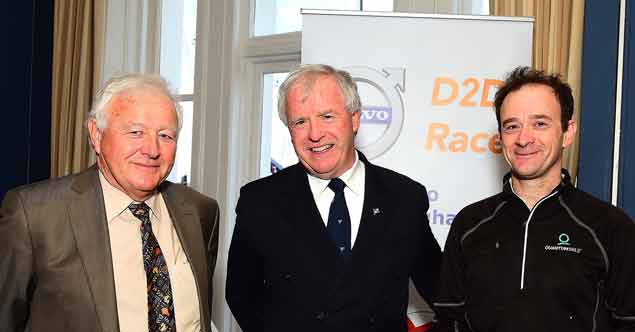 Brian Farrell, Harbour Master of Dingle when the Dun Laoghaire-Dingle race was inaugurated in 1993, Ronan Beirne the newly-elected Commodore of the National Yacht Club, and Yannick Lemonnier, who will be racing a Minitransat 650 to Dingle. Photo Michael Chester
Brian Farrell, Harbour Master of Dingle when the Dun Laoghaire-Dingle race was inaugurated in 1993, Ronan Beirne the newly-elected Commodore of the National Yacht Club, and Yannick Lemonnier, who will be racing a Minitransat 650 to Dingle. Photo Michael Chester
Presumably the RORC still sends the RVYC an annual Christmas card as a token of their appreciation of that display of faith way back in 1925, now that the hugely popular Fastnet Race is started from all the glory of the Royal Yacht Squadron line at Cowes.
And as for the Dun Laoghaire-Dingle Race in all its manifestations, while it has always been comfortably under the imprimatur of the National Yacht Club in Dun Laoghaire, the developing positive attitude towards sailing at official levels in Dun Laoghaire/Rathdown was underlined by the official presence at Tuesday’s gathering of Councillor Cormac Devlin, Cathaoirleach of Dun Laoghaire/Rathdown County Council.
But while the new turbo power of the Volvo Dun Laoghaire to Dingle Race was quietly in evidence at the party in the National YC this week, it was good to meet up with old friends from Dingle from the earliest days, particularly the former Harbour Master Brian Farrell whose enthusiasm for his job always went way beyond the call of duty.
There too were Brian Barry and Peter Cullen, both of whom did so much to put the show on the road and keep it there through times good and bad. But it was appropriate that also present was the one and only Yannick Lemonnier, who did the race in the two-handed division in 2015 (he was second to Howth’s Colm Buckley and Simon Knowles) but in 2017 will be doing it in a new special division which has been encouraged into the fray by the National’s Sailing Manager Olivier Prouveur.
Yes indeed – the Volvo Dun Laoghaire to Dingle race will be providing a start for Mini 650 boats, and Yannick Lemonnier will be right in the thick of it all. They’ll get a separate prize and won’t be in the IRC Division, but it’s a new twist in a race which, in 2017, will also have a new old twist.
 David Thomas, MD of Volvo Car Ireland, with Emma O’Carroll, also of Volvo Car Ireland, and Darryl Hughes, owner-skipper of Maybird, the first gaff-rigged entrant in the Dingle Race. Photo Michael Chester
David Thomas, MD of Volvo Car Ireland, with Emma O’Carroll, also of Volvo Car Ireland, and Darryl Hughes, owner-skipper of Maybird, the first gaff-rigged entrant in the Dingle Race. Photo Michael Chester
For no-one has any recollection of the Dun Laoghaire to Dingle Race ever having a gaff-rigged entry in its 24 years. Yet the madly enthusiastic Darryl Hughes has entered his beautifully-restored 1937 Tyrrell-built 43ft gaff ketch Maybird. He knows he’ll be doing quite well to make it to Dingle in time for the prize giving. And then he’ll have to think of further schedules, as he is also entered for the Classics Division in the Volvo Dun Laoghaire Regatta from July 9th to 12th. But in the National this week this week he was able to assure everyone that Maybird is already well n the way to being race ready. Sure hadn’t he and his mates scrubbed her and anti-fouled her – including a fresh boot-top – all on the one Spring tide at Poolbeg a couple of weeks ago? So the count-down is already well under way for the turbo-powered Volvo Dun Laoghaire-Dingle Race 2017.
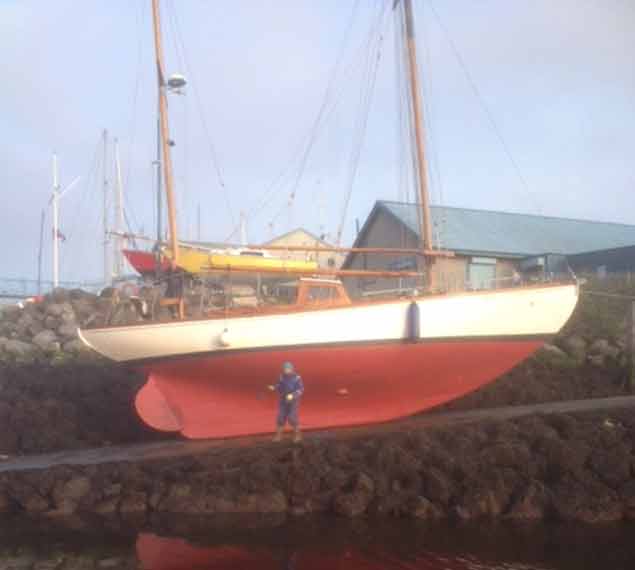 Race preparation. Maybird gets completely re-antifouled and with a fresh boot-top a fortnight ago, all in one tide at Poolbeg
Race preparation. Maybird gets completely re-antifouled and with a fresh boot-top a fortnight ago, all in one tide at Poolbeg
National Yacht Club Elects Ronan Beirne as Commodore
The National Yacht Club has elected Ronan Beirne as Commodore at last week's agm in Dun Laoghaire. The Flying Fifteen sailor and Irish Cruising Club member will have Martin McCarthy as Vice–Commodore and Susan Spain as Rear.
The Honorary Secretary of the waterfront club is Peter Sherry and the Honorary Treasurer is Conor O’Regan.
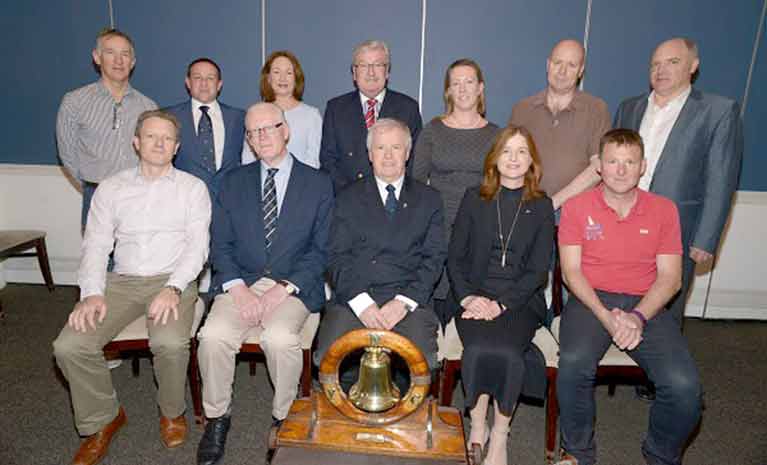 The 2017 National Yacht Club Flag Officers and Committee
The 2017 National Yacht Club Flag Officers and Committee
Other members of the NYC committee are:
Sailing Secretary: Peter Murphy
Boathouse Captain: Cillian Meldon
Junior Section Secretary: Fiona Staunton
General Committee: Michéle Halpenny
General Committee: Helen Cooney
General Committee: John McNeilly
General Committee: Alan Turner
General Committee: Chris Doorly
General Committee: Peter Doran
The National Yacht Club looks set to gain Royal Ocean Racing Club recognition for its mini–offshore Dun Laoghaire Dingle race as David O'Brien reports in the Irish Times Sailing Column this morning.
The Dun Laoghaire Dingle application is well timed because RORC Commodore Michael Boyd says the London–based club is keen to encourage RORC racing across the UK, not just Channel races.
The June 14th race – first hosted by the NYC and County Kerry’s Dingle Sailing Club in 1993 – is working closely with Dublin Bay Sailing Club (DBSC) and the Irish Sea Offshore Racing Association (ISORA) to develop the “mini-offshore” into an international race.
Incoming race chairman Adam Winkelmann is adding extra spice by adding a new title sponsor and recruiting a French Mini–Transat fleet.
RORC will assess this Volvo-sponsored edition of the race with a view to adding the race to its points series in 2019.
Read the full story in the Irish Times here and more on this year's D2D race here


